There has been no shortage of predictions about the year ahead in geopolitics. But while uncertainty remains the defining trait of international affairs, crystal balls must give way to sober analysis. Understanding how complex international challenges affect us as individuals and nation states is crucial, and there are three key characteristics of today’s international system we must focus on.
First, there will be no return to a rules-based status quo ante. We are firmly in an era of great power competition, with the US and China at its core. State relations are increasingly spilling into conflict – kinetic, cyber, economic, or the so-called “grey zone” spanning everything from disinformation to acts of sabotage.
Second, the global landscape is now split into three camps: the “global” West (the US and its Euro-Atlantic and Indo-Pacific allies); the revisionist powers (the “Crink” bloc of China, Russia, Iran and North Korea); and global swing states that navigate between these two with varying affinities. The “bloc-iness” of the world will determine the way in which we travel, trade and interact in different domains.
And third, the 2024 “year of elections” proved that populism remains an effective electoral strategy, often outpacing establishment messaging. This trend will persist for as long as trust in governing institutions is low and frustration with political leaders remains high. While the coming year offers comparatively fewer electoral races, Germany’s federal elections on 23 February are poised to offer a test of populist resurgence that will reverberate well beyond its borders.
The three dynamics mentioned above will endure despite any unforeseen developments, such as the surprises of last year – from Biden’s election withdrawal and the two attempts on Trump’s life to the fall of Syria’s Bashar al- Assad and South Korea’s most serious constitutional crisis since democratic consolidation. Trump’s return as the 47th US president is the most consequential development for international security in 2025. Hopes of reviving the rules-based order under US leadership, as it stood for the past 80 years, ended on 6 November 2024. Granted, pre-2016 US foreign policy wasn’t always a paragon of multilateral ideals, but Trump’s unilateral, transactional approach now signals its breakdown, as his policies, often contradictory, begin to shape crises worldwide.
Despite Trump’s promises to end the war in Ukraine, deep divisions between Kyiv and Moscow make a quick and lasting resolution unlikely. In the Middle East, many more questions loom. Will Iran respond to declining influence with concessions or accelerated nuclear ambitions? How will Israel shape its internal affairs and neighbourhood? And can Syria unite post-Assad? The answers to these questions will define regional stability in the short to medium-term. Moving further east, most security analysts will be looking towards Taiwan, where Trump’s policies offer mixed signals: a pledge to intensify competition with China contrasts with his viewing Taiwan as a threat to US economic interests in semiconductor production. Meanwhile, China’s aggression in the South China Sea raises questions about the new US administration’s approach to allies such as the Philippines.
Geopolitical challenges are almost certain to grow with rising protectionism. Trump’s intention to slap tariffs on Chinese goods (along with those on US allies and partners) risks countermeasures that will destabilise global trade and threaten economic stability. These challenges are only a segment of the broader international security landscape. Equally pressing are the far-reaching effects of climate change, terrorist threats and global health crises. All are compounded by the effect of artificial intelligence and rapid technological advancements, reshaping how states govern, co-operate and compete. Of course, these factors are not tied to one calendar year; they continue to influence the stability of societies. And 2025 will be no exception.
Only by staying informed, anticipating change and finding ways to adapt and respond can we navigate the uncertainties ahead and hopefully contribute to shaping a more secure future. I look forward to doing my part and sharing key insights with you as Monocle’s new security correspondent. —
Gorana Grgic is Monocle’s security correspondent and a senior researcher with the Swiss and Euro-Atlantic Security Team at ETH Zürich’s Center for Security Studies.
Chances are that you’ve come across the Moomins. The white, hippo-like white trolls and the universe they inhabit, alongside a motley crew of other whimsical characters, are the creations of Swedish-speaking Finn Tove Jansson – and they celebrate their 80th anniversary this year. But did you know that the Moomins have grown into a €680m business that collaborates with the likes of Comme des Garçons, Rimowa, Starbucks and Bulgari, and has more than 800 licensees worldwide producing everything from toys to homeware, as well as TV shows in more than 120 countries and books published in 55 languages? Despite having grown into a global business, Moomin Characters Ltd is still family-run and has been for three generations.

“Irrespective of how amazing the body of work is, if you don’t introduce it to more people and find new ways to tell those stories, they will eventually be forgotten,” James Zambra, creative director of Moomin Characters, tells Monocle when we visit the Helsinki HQ. (Zambra’s mother, Sophia Jansson, is Tove’s niece, the company’s former CEO and current chairman of the board.) This kind of thinking defines the family’s approach to managing the Moomin brand and legacy. Instead of sitting on the property rights and protecting them from unauthorised use (the more traditional method of an IP rights holder, says Zambra), the company seeks out collaborations that engage new audiences with the Moomin universe. This includes everything from toys and books to fashion and homeware.
“The wonderful thing about the Moomins is that they speak to adults and children alike,” says Thomas Zambra, director of business development, as we tour the seaside offices, dotted with Moomin memorabilia. “Tove was so incredibly perceptive about life and poured so much of that into the Moomin universe, with its eccentric characters, playfulness, harmony and sense of adventure.” Despite their Finnish origins, the Moomins are popular on all continents, especially in Asia. Japan alone accounts for 40 per cent of the business – the same as Scandinavia. Other key markets include China, Poland and the UK.

As a visual artist and author living in the pre-digital age, Tove Jansson left behind a vast collection of writings and drawings. To keep her legacy alive and help people understand the Moomins’ origins, the company runs an extensive archive. “It’s impossible to put a precise number on everything that we have here but I would say that it is at least 10,000 items,” says Maria Andersin, who is in charge of the archive, as she shows monocle around the treasure trove. It features everything from the first hand-sewn Moomin figurines from the 1950s to early letters that Tove Jansson wrote to licensees, in which she meticulously details the characters’ features, including the shape of their ears and the position of their legs. Jansson’s earliest sketches and the subsequent drawings offer a perspective into how the characters were born and developed. “During the anniversary year, the focus is on the origins of the Moomins and their early days, and the archive plays a key role in that,” says James.
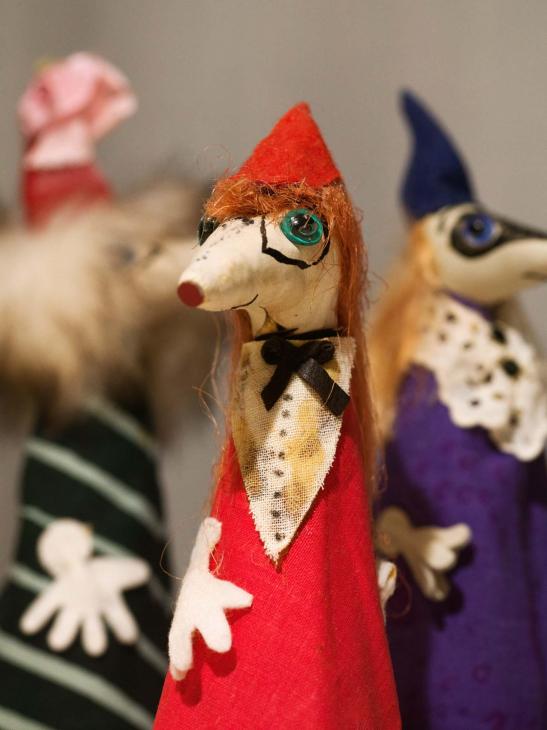
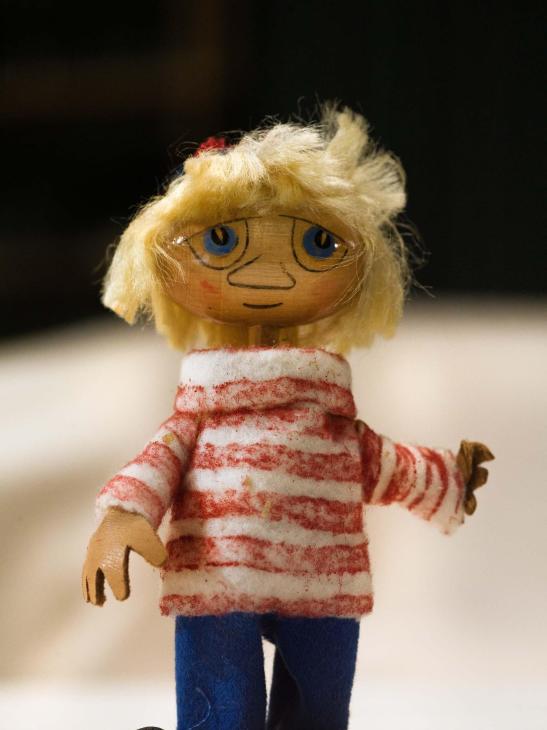
The anniversary will be marked by events including concerts on several continents; special editions of original books as well as some new ones; exhibitions in Japan, the UK, Finland and Sweden; and collaborations with agencies such as the Red Cross, as well as notable brands. One such company is Artek, the Finnish heritage brand founded by architect and designer Alvar Aalto, which is turning 90 this year. When monocle visits the Moomin offices, Artek managing director Marianne Goebl and senior designer Satoshi Yoshida are visiting to plan a new collaboration set to be unveiled in March. “For us, it is natural to create something with Moomin Characters,” says Goebl. “Both Aalto and Jansson were luminaries whose creations share a universal, timeless appeal as well as a certain light-heartedness.”
For both brands, working together is more than a simple marketing exercise. As the popularity of the Moomins grew over time, Tove Jansson was always particular about how the characters were portrayed and by whom. A key reason for launching the Moomin Characters company with her brother Lars in the 1950s was to protect the integrity of her creations as they gained popularity around the world. She went to great lengths to do this, even painting some of the earliest Moomin mugs produced by Finnish ceramics company Arabia. “With Artek we share a similar history and a heritage but it goes beyond that,” says James. “In the Moomin universe, home (the “Moominhouse”) is the centre of everything. Therefore, we see it as fitting to Tove’s legacy to collaborate with an interior design brand.”



The Moomins’ global presence 80 years after their creation would not be possible if the message of the large-snouted creatures was not relevant today. In many ways, Jansson was ahead of her time in terms of her values and views, and her long life was marked by curiosity about the human condition and her surroundings. Many characters are at least partially based on people who she knew; they include Snufkin and Too-Ticky.
This humane element to the characters and stories is key to their timeless appeal. “They are not superheroes,” says Thomas. “Every Moomin character is flawed in some way or another but despite their differences, they are happy together.” The stories also touch upon the most common traits found in most of us – curiosity, fear, and the need for safety and comfort. “Life in the Moominvalley is full of adventures, small everyday challenges and the joy of discovering new things,” says Thomas. “It is harmonious but in a very playful and human way.” The same playfulness guides much of what Moomin Characters does as the guardian of Tove Jansson’s legacy. Or, as James puts it, “We are a ‘roadmap to happiness’ brand.” — moomin.com
1.
Museu de Arte Contemporânea Armando Martins
Lisbon, Portugal
Lisbon’s new cultural hotspot, the Museu de Arte Contemporânea Armando Martins (Macam), is housed in the 18th-century Palácio Condes da Ribeira Grande a five-star hotel. It is both a gallery and a hotel – the first of its kind in Europe. Founder Armando Martins’s private collection of 600 artworks decorates the walls of both the exhibition areas and the hotel rooms. “This creates an immersive cultural experience,” says Macam director Adelaide Ginga. A night spent in the deconsecrated-chapel-turned-bar before jumping into bed with a masterpiece is an experience indeed.
macam.pt

2.
Fenix
Rotterdam, Netherlands
Fenix, a new museum devoted to telling stories of migration through art, will open in May in a former warehouse in the Katendrecht district. While the collection will include chastening photography of refugee camps, lighter pieces will also be scattered throughout. One such example is American artist Red Grooms’s mixed-media, soft-sculpture New York bus, in which visitors will be encouraged to take a seat alongside brightly painted passengers made from foam. “It’s important that the museum stays grounded,” says director Anne Kremers. “And it’s essential that people embrace it locally, in addition to being an international museum.”
fenix.nl
3.
Naoshima New Museum of Art
Naoshima, Japan
If art is meant to inspire and revive, what better setting for a gallery than a hilltop perch overlooking the waters of Japan’s Seto Inland Sea? This new Tadao Ando-designed museum, which will open as part of the Benesse Art Site Naoshima, will focus on contemporary Asian art, with its inaugural exhibition featuring works by Takashi Murakami and Cai Guo-Qiang. “It’s not about one museum but an integrated collective of museums sitting in harmony with the islands’ nature and community,” says Benesse Art Site Naoshima’s international artistic director Akiko Miki. “That’s what makes it unique.”
benesse-artsite.jp
4.
The Hip Hop Museum
New York, USA
A museum to celebrate hip hop could only ever have one proper home: the Bronx. “This authenticity can’t be replicated elsewhere,” executive director Rocky Bucano tells monocle. With MCs, DJs, breakers, graffiti artists and other cultural leaders at the helm, the museum will honour pioneers of the art form. As well as showcasing memorabilia and rare artefacts, The Hip Hop Museum will have an in-house radio studio and a theatre for performances from emerging talent and well-known artists. “It’s not just about commemorating the past,” says Bucano. “It’s about grounding the story in its original soil; inspiring the youth who still call these streets home.”
thhm.org
5.
Museum of West African Art
Benin City, Nigeria
The tangle of buildings that make up the Museum of West African Art (Mowaa) are clean-lined, low and surrounded by trees. As well as exhibition spaces, the campus hosts a science lab, research facilities and a guesthouse. Though its location in Nigeria’s Benin City might provoke debate about returning the Benin bronzes to Nigeria, Mowaa has not been built as the artefacts’ future home. Crucial to the project is creating practical infrastructure for research, while also serving contemporary artists’ needs. “Mowaa is a statement to the world,” says director Phillip Ihenacho. “It is a vehicle to more firmly ensure that West Africa is part of global art practice and recognised for its contributions.”
wearemowaa.org
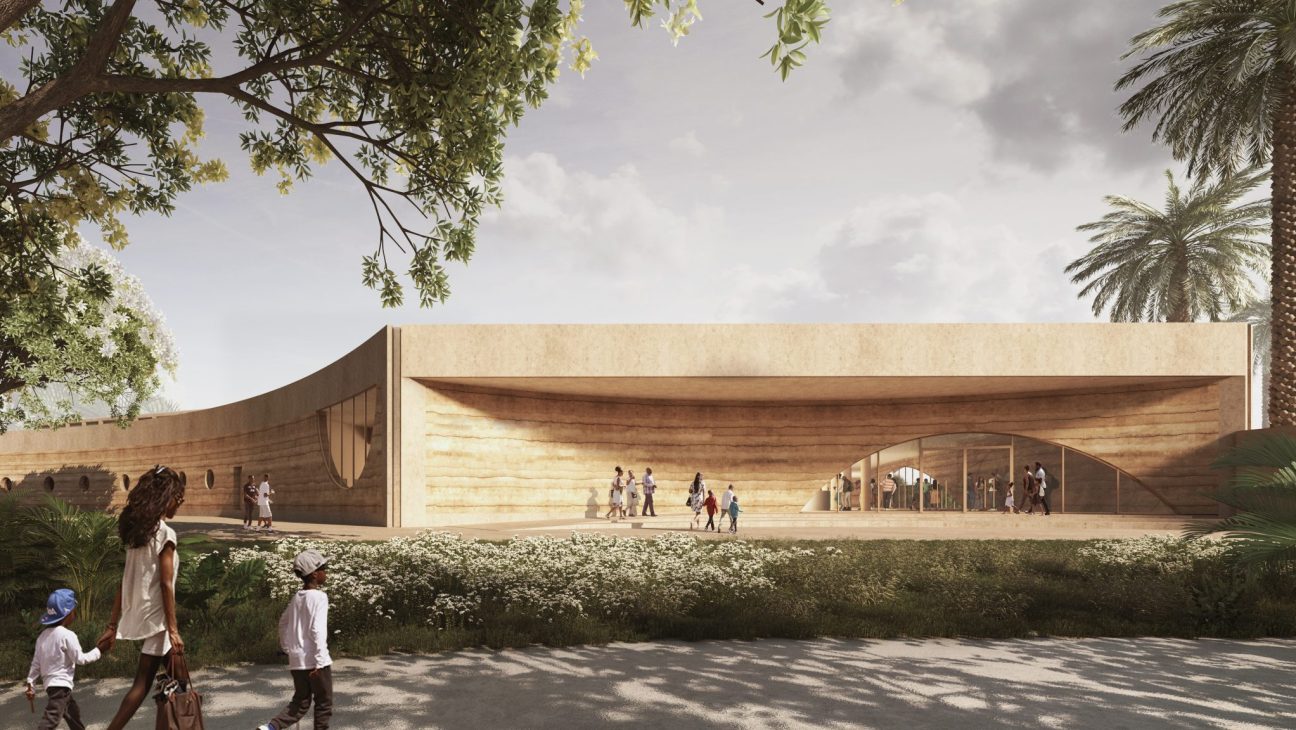
6.
TeamLab Phenomena
Abu Dhabi, UAE
Founded in Tokyo in 2001, TeamLab is an art collective that is represented internationally by Pace Gallery, placing it in the esteemed company of artists such as David Hockney and Mark Rothko. While TeamLab’s digital installations lack the tactile qualities of a Rothko canvas, they are similarly immersive, using cutting-edge technologies to create renderings of larger concepts. The collective’s vast new 17,000 sq m space will provide these artworks with a home in Abu Dhabi’s Saadiyat Cultural District – an island destination that also includes branches of the Louvre and Guggenheim. By embracing innovation, TeamLab might just steal the spotlight from these established institutions.
teamlab.art
Last year almost half of the world held up a finger in the breeze, hoped for the best and voted in elections to decide its future. Over the next 12 months a dizzying array of new museums will open with an eye on the very nature of truth, viewed through the prisms of immigration, repatriation, artificial intelligence and more – topics not unrelated to the choices made in 2024. Perhaps you’re thinking, “Wouldn’t it have been nice if we had been given a little more time to learn about these things before choosing our fate?”
Museums have been enjoying a golden age in building, refurbishment and attendance since the turn of the millennium and the transformation of knowledge from something that’s largely stored in books and artefacts into information that’s principally stored digitally and available everywhere, all at once. While convenient, however, screen learning and screen knowledge are also incomplete and two-dimensional. The growing power of bricks-and-mortar, glass-and-steel museums – and an increasing desire to convene with the physical – has accompanied the rise of the virtual and is its temporary rejection. When you visit an exhibition, your phone stays in your back pocket unless you want to snap some shots of the works on display. You might have heard about a show online but you queued to see it in person. The point is that you had to see it in the flesh. You encountered the real thing. Doesn’t that feel good?
I sensed this victory of the physical over the virtual during the Christmas holidays while visiting Antwerp for some misty meandering over the medieval cobbles of the Old Town and out to Zurenborg’s art nouveau marvels. I found two museums with very different offerings open during this period of seasonal closures: the MoMu fashion museum was showing Masquerade, Make-Up & Ensor alongside a fascinating slice of its princely permanent collection, while the Museum Mayer van den Bergh did its stolid thing with artefacts and masterpieces from the collection of 19th-century art historian Fritz Mayer van den Bergh.

At the latter museum, the great collector’s treasures of gothic and northern Renaissance art, as well as a haul of altarpieces and Christian statuary, artefacts and sundry odds and ends, are displayed “salon-style” – in other words, all over the place. It’s a charming cacophony of winsome annunciations, sorrowful crucifixions, very non-Lutheran ecclesiastical glitz, greengrocer-fresh still-lifes, stern and playful portraits, and both the impish and utterly unhinged sides of Pieter Bruegel the Elder.
Bruegel’s “Twelve Proverbs on Wooden Plates” is a wry, annotated take on peasant logic. It features gems such as, “I am rebellious and sullen so I run with my head against the wall,” accompanied by a picture of said rebellious character crunching his noggin into a solid-looking edifice, and, “No matter what I attempt, I never succeed; I always piss against the moon” (image: crestfallen bloke indeed urinating towards an unattainable lunar body). The artist’s infamous “Mad Meg” gets a room to itself and, if it were in a lesser institution, would probably come with a trigger warning: “Contains images of a disturbing nature, including bowler-hatted spider people, the horrors of war and men with spoons up their bums.” But this isn’t a lesser institution and so the museum’s homepage features instead a photo of two wholesome Belgian mothers pointing out scenes of carnage to their little ones.
Joking aside, the whole place is a mad joy and home to small wonders, such as the clerk who takes your €10 while softly swearing at his computer (“Told you this was better than the internet,” he might be saying) or the little “Highlights” book that you get to keep as a souvenir. From the art to the rooms heavy with old brown wood and the dust on the chandeliers, it’s the real deal and gloriously subjective. It’s one collector’s love of art and artefacts laid out for your viewing pleasure. If you like it, great; if you don’t, there’s a Zara Home an eight-minute walk away.

The joy of being there was also in evidence around the corner at the MoMu. Dark wood, light walls, a playful way with lines of sight and a great wash of natural light from a partially glass roof make the museum a beguiling place to pass through, and its stylishly appointed café is a wonderful lunch spot. But there’s a whiff of municipal neutrality to the permanent, public parts of this institution that you hope will be alleviated by the temporary shows and their designers, who are so fond of making whole new worlds in which to fit their exhibitions’ ideas.
So it was with Masquerade, Make-Up & Ensor, a stunner of a thing that was full of ideas, excellent materials, clever staging and subtle lighting. Its supremely confident curation successfully combined its potentially awkward ingredients – explorations of the look and meaning of theatrical masks, interrogations of beauty in art and the desire to change our faces with make-up, a glance at the beauty industry in marketing and the media. All while putting these on the aesthetic and psychological terrain of the funny, sad, grotesque and beautiful paintings of Belgian surrealist, expressionist and not-quite exhibitionist James Ensor.
I’m mindful that that’s a mouthful but there was a lot going on. In certain respects, it was a very adult show that was also studded with runway and fashion footage, photography, make-up and lookbook captures from the 1980s and 1990s. Most of the other visitors on the day that I attended were teenage girls accompanied by women who I presumed were their grandmothers. I was interested by just how few smartphone photos I saw being taken of the exhibits or the wall texts but there was a lot of excited and whispered Flemish chatter on which my English ears could not successfully eavesdrop.
The show was fascinating but so too was witnessing other people’s fascination up close and in person. I sensed that the ideas around female beauty that it probed would soon profoundly affect many of my fellow visitors. I can’t imagine how anything of the sort could be staged except in the bewitchingly physical style with which this show was executed. So, yes, you had to be there.
Last autumn I was fortunate enough to receive a preview of two new museums in nearby Rotterdam. The Nederlands Fotomuseum is moving to a new site in what was once the gargantuan Santos coffee warehouse in the unlovely but up-and-coming dockside Katendrecht district. Its archive is one of the world’s largest repositories of photography, with more than six million items. The museum will show many of these and have a restoration department as part of its permanent collection, as it were – an observable, perhaps even visitable part of the building. In an era when image manipulation can be highly political and is obviously dangerous, a museum department dedicated to sprucing up photographs for the better, performing its task transparently, is a clever and somehow very Dutch idea. Despite these iconoclastic leanings, the museum is highly likely to become an icon in its own right.
A stroll down the old dockside took me to what will be Fenix when it opens this May – a museum about migration that is being built in what was once the world’s largest warehouse and up to its Iain Sinclairs in psychogeographic relevance. It sits next to one of Europe’s first Chinatowns, now a highly multiracial neighbourhood, and is over the harbour from the former headquarters of the Holland America Line, on which so many Dutch emigrants steamed westward to secure succour. It’s a proper in-and-out club.
Immigration is something that appears to be changing Western European politics decisively and so this museum, led by its thoughtful and probably necessarily forthright director, Anne Kremers, will be a topic of much debate. It’s an essential visit for anyone with even a passing interest in the stories behind the myths and the headlines, then and now. Immigration is a topic whose relevance is burning enough to fill this museum’s cavernous spaces and the works announced so far seem as witty, smart and suggestive as the realities of some of the stories that will doubtless be housed in this great hangar of compassion are harsh.
I would argue again that this sort of thing can only be done in a physical place. As with photographic manipulation or telling subtle stories about the nature of beauty, or “simply” showing off a collector’s passions, the viewer’s proximity to the stuff is vital. The online world is full of fevered fictions that are never less than certain on either side of an argument. Subtlety, depth, discussion? You’ll get them here, in a place, not there in the virtual realm.
Of course, you’ll also sometimes get utterly stupid wall texts, wrong-headed curatorial notes and obfuscatory art speak in museums but you can see the painting that they’re discussing in its big, gold frame and decide for yourself whether, for example, it’s about rich people liking horses in 18th-century England or it’s secretly about how awful it is that some people had horses and other people only had donkeys, if they possessed a beast with a leg in each corner at all. Because though you might not be an expert and may be persuaded by a crazy claim, you can see the painting in its three dimensions. And you might also go home and read more about it in a book and come to something adjacent to the truth.
Museums are transformative. From children making learning a lifetime habit after quaking in awe at the cathedral-long blue whale in London’s soon-to-be-revamped Natural History Museum to the many canny culture and tourism boards reviving their regions with the addition of a bright, new cultural centre, museums can change both people and places. When the Guggenheim Foundation unveiled its Bilbao institution in 1997, millions of visitors and millions of euros were drawn to a tired and unloved city in Spain by a building considered excitingly avant garde. This set in motion the museum mania that is perhaps only now beginning to reach the end of its super-cycle. You had to see Frank Gehry’s curved, crinkled titanium-and-steel masterpiece to believe it – and so people did, in droves.
In the grand projet that is Abu Dhabi’s Saadiyat Cultural District, the Guggenheim is preparing to open a new museum of a similar design by the same architect. The Emirate is right to expect lightning to strike twice and the project’s ambition is big, bold and brave. It sits on an island nestled close to other cultural hot spots, including a Louvre designed by Jean Nouvel and the soon-to-open Zayed National Museum, named after the nation’s founder, Sheikh Zayed bin Sultan Al Nahyan, and designed by Norman Foster.
On another island in Japan’s Seto Inland Sea, the Naoshima New Museum of Art will open this spring, showcasing the work of contemporary Asian artists in a building designed by the chalk to Gehry’s cheese, Tadao Ando. These institutions and a long list of others, whether ancient or modern, are all about place, experience and context. You will be in the realm of the senses, reaching out and touching the world – the real one.
There’s a lovely museum and concert hall on the Sussex coast called the De La Warr Pavilion. It’s a well-kept 1930s modernist building, which is rare in England. I once went to an exhibition there and met the curator, who was perhaps near the beginning of her career. She skipped down the beautiful staircase and told me why she had wanted to work there. It’s a good place, of course, but really, she said, it was because of the staircase, designed some 85 years previously – its precise incline and flow, the quality of pleasure afforded by the gap between riser and tread. The joy that it gave her made her certain that this was the right place to be. It was the absolute satisfaction of the building’s physicality. Of course!
So, the right place to be is in front of just one work, looking and seeing; seeing how others look; wondering how you might seem. There are other worlds in museums and you might just find yourself in them too. Museums are community, communication, communion. And, yes, they might help us to make better decisions and know more – and lift us out of ignorance. You won’t find that somewhere that’s nowhere, will you? —
When camera designer Takeo Suzuki first suggested to his bosses at Ricoh Imaging that they make a new Pentax film camera, he was met with an awkward silence. Ricoh had acquired the iconic Japanese camera brand from the optical-glass company Hoya Corporation in 2011 but film-camera production had been abandoned in Japan; there hadn’t been a new Pentax model since 2003 and Ricoh’s focus was now fully on digital. “I just remember everyone seemed to freeze,” says Suzuki from the Pentax Clubhouse in Tokyo. Despite his colleagues being unsure, Suzuki managed to win them over. He persuaded them that they would be doing something completely fresh: making a film camera for the modern era, aimed primarily at a young smartphone-literate generation who don’t have a clue how to load film, let alone have the patience to wait for photographs to be developed. “I was one of those people who froze,” says Makoto Iikawa, an engineer. He started out as a sceptic but ended up leading the development team of the Pentax Film Camera Project, which created the Pentax 17, the company’s first film camera in 21 years.

Suzuki and Iikawa were joined by Yoichi Nomura, a lens whizz, and Shinichiro Sanada, whose job was initially to turn dog-eared technical drawings for film cameras into a more usable 3D format. Suzuki had some older cameras in mind for inspiration – the Ricoh Auto Half from the 1960s and the Pentax Espio – but there was no existing mould for this new camera. “We had to start from zero,” says Suzuki.

Suzuki made some key design decisions that set the Pentax 17 apart from other film cameras on the market. Unless turned on its side, it takes pictures vertically, which is good for viewing and sharing on smartphones (Suzuki knew that this would be a must for younger users); it has a simple fixed lens with manual focusing, which offers autonomy without demanding too much technical know-how, and it uses a half-frame film format (it takes two shots per frame, which doubles the number of pictures that can be taken on each roll of 35mm film). “Half-format cameras were big in the 1960s and 1970s when every family only had one camera – they were just more economical,” says Suzuki.
Suzuki was certain about one thing: having a manual advance mechanism. Sanada took advice from the one person at Ricoh who had worked in film cameras and then dedicated himself to perfecting the length of the lever and the satisfying sound as it winds the film forward. “It took a few attempts to get it just right,” he says. The Pentax 17 has blown open the possibilities for film cameras and shown that film photography can co-exist with, and even take inspiration from, smartphone cameras. “You can get the perfect shot with a smartphone but a film camera allows you to explore and mess up,” says Suzuki. “There’s a good synergy in having both.” — ricoh-imaging.co.jp
Instant gratification
Ricoh isn’t alone in combining smartphone-inspired features with film. Here are three other models taking instant snaps to the next level.

1.
I-2 Camera
Polaroid
Polaroid has recently introduced the I-2, which has an ultra-sharp lens, manual controls and Bluetooth to link up with printers and photo apps.
polaroid.com
2.
Instax Wide 400
Fujifilm
The Instax Wide 400 is twice the size of the popular Instax Mini. It offers instant high-quality prints and features a manual timer for easy group shots.
instax.com
3.
Lomo’Instant Wide Boston
Lomography
Instant cameras were once limited by a single lens. The Wide Boston comes with three lens attachments, offering flexibility on instant film.
lomography.com
Experienced typists write more quickly and efficiently on digital devices than by hand. The technology also helps them to edit, structure, organise and distribute their work. That’s why tapping away on keyboards is usurping the act of putting pen to paper. Handwriting, some say, is withering as though it were a neglected plant or dying out like an endangered species. Its survival can only be ensured through care. But is it something that we must protect – and, if so, why? Even analogue nostalgists surely accept that cultural practices can lose their importance and value over time. We would all rather be operated on with a laser beam than a hand axe.
Handwriting’s decline can be dated back to the mid-1870s, when US gun manufacturer Remington launched the first commercially successful mechanical typewriter. Its benefits were clear – it allowed people to write letters more quickly and legibly – but warnings about the decline of culture and morality followed almost immediately. One sceptic even criticised the technology for threatening masculinity by replacing the pen as a “symbol of male intellectual creation” with a machine. But progress marched on unhindered. “Today we write more for private and professional reasons than ever before,” says Zürich-based linguist Andi Gredig. “We just do it less often with pen and paper.” People still rely on pens, mainly for notes, to-do lists and greeting cards, “as well as for signatures, which are still necessary in many official and legal contexts”, says Gredig. However, they’re less often used for long, coherent texts.

That is unlikely to change. In Switzerland, where I live, primary schools are paying less attention to handwriting than ever before. Calligraphy lessons have long been abandoned and handwriting is no longer assessed. Decoration has ceased to be a priority: the Swiss basic script, which can be written quickly and is designed for clarity, has replaced ornate cursive script in all German-speaking Swiss cantons. Their curriculum, meanwhile, simply requires that pupils “learn to write legibly and fluently in their own handwriting”.
Beat Schwendimann, the head of education at an umbrella organisation of teachers in Switzerland, thinks that this is enough. “Teaching time is limited,” he says. “The range of subjects taught is broader than it used to be, when it consisted of reading, writing and mathematics.” When pupils write at school, it’s no longer exclusively in German or on paper. “They still write by hand but they mostly use a computer or a tablet, as will be the case in their professional lives.”
Finland has received top marks from the Organisation for Economic Co-operation and Development’s Programme for International Student Assessment, which evaluates educational systems by measuring 15-year-olds’ scholastic performance. In 2016, the country caused a stir when it relegated handwriting in schools in favour of computer skills in order to prepare pupils for the digital world.
“Writing is one of the most complex skills of the human hand,” says Heinz von Niederhäusern, a retired psychomotor therapist from Zürich. “Handwriting is as individual as a fingerprint and deeply personal.” Though its appearance can be greatly affected by the situation of the writer, Von Niederhäusern doubts that one can accurately assess a person’s character from it. In the 1970s, however, graphologists attempted to do just that, as part of the recruitment process for companies – even though graphological reports don’t meet scientific standards.
“Writing is not only a product of cultural evolution but also its driving force,” says Von Niederhäusern. The Sumerians began using cuneiform script and the Egyptians came up with hieroglyphs more than 5,000 years ago. With the advent of the first writing systems, complex societies emerged that recorded their laws and rules. The Phoenicians developed an alphabet with 22 consonants in about 1200 bce. The Greeks adopted it, added vowels, improved its legibility and made writing more precise. This development expanded their communication options and promoted abstract thinking. The Romans then adapted the Greek alphabet and created the Latin one, and spread it throughout their vast empire. It still forms the basis of our writing today.
Medieval monks copied religious and scientific texts, preserving knowledge and promoting intellectual development. Influenced by the ideas of the Enlightenment, public schools that systematically taught reading and writing emerged in Europe in the 18th and 19th centuries. “The extent to which writing and thinking are interrelated is shown by the fact that in some of these schools only reading was taught, not writing,” says Von Niederhäusern. “The authorities considered the latter to be too subversive.”
With the invention of Gutenberg’s printing press in the mid-15th century, writing shifted to mechanical processes, which made it easier for people to access written material. Such developments didn’t diminish the magic of writing by hand – that is, until typewriters revolutionised everyday office life and, more recently, smartphones reimagined most other forms of communication.
Von Niederhäusern’s thumb and index finger grasp a pen and hold it like tweezers. The middle finger acts as a support, while the ring and little fingers are slightly curled up to help hold the pen. Joints bend and stretch; a dance begins. With gentle pressure, the wrist performs a pendulum movement inwards, then outwards. The hand and forearm move to the right. Eighteen small and 15 long muscles, 16 joints from the wrist to the shoulder and 24 bones are involved in this seemingly simple task.
“No other organ of movement is as finely tuned and versatile as the hand,” says Von Niederhäusern. With the slightest uncertainty in movement, a line can become wobbly, the letter might tilt or the image become unclear. By contrast, when someone types the letter A or Z on a computer, all it takes is a finger to press on the corresponding key. Even if you hit the key while you’re tipsy, a perfectly formed letter will appear. The typist’s state of mind leaves no trace on the display but this process won’t inspire an idea that might encourage a typing frenzy. That’s the crux of typing quickly on a keyboard. Your brain’s motor and cognitive processes remain inactive until you begin to type.
Children who write letters by hand remember their appearance more easily. They associate the sound of letters or phonemes with the movement and feeling of the pen scratching on the paper. But even subtle things such as the smell of the cleaning product in their classroom become part of their memory. “This creates a fine-meshed neuronal network in the brain,” says Lutz Jäncke, a neuropsychologist at the University of Zürich. When we write with our right hand, it activates the left half of the brain, where motor skills and language are located. All of the information that is needed for writing converges here. “The communication channels are efficient and the brain processes it so quickly that it can link a lot of other information to it,” says Jäncke. When typing, however, the information has to switch between the two halves of the brain because both hands are involved. This is a process that is prone to disruption, in which a lot of information is lost and “fewer connections are made”.
Jäncke compares the neural network in our brain to a fishing net. The tighter it is, the more it catches. This strengthens memory and enables more unexpected associations. Thus a scent of a cleaning product (or the taste of madeleines dipped in tea) can suddenly be linked to a thought. These fine details become anchored in the memory and encourage imaginative ideas. The slowness of writing by hand promotes this process and enhances our thinking, memory and creativity compared to the speed of typing. “Those who write by hand get more out of their lines and circles,” says Jäncke.
All of this is supported by several studies. One of the best known is by two US psychologists, Pam Müller and Daniel Oppenheimer. In 2014 they investigated how students’ handwritten and digital notes affected their learning. When asked about pure factual knowledge, there was no difference between those who wrote by hand and those who typed. But there was a gap when it came to conceptual knowledge, such as the question of how Japan and Sweden differed in terms of social justice. Those who wrote by hand came out on top. This was because they summarised what they had heard in their own words instead of writing things down word for word. “Our lazy brains, which are reluctant to put in much effort, tempt us to do this when we type on the keyboard,” says Jäncke. Even when laptop users were instructed not to take word-for-word notes, they still did worse in terms of conceptual knowledge than those who wrote by hand. What they typed tended to resemble half-digested ideas – not so conducive to learning or independent thinking.
Finns are no longer focusing solely on typing in schools. They have recognised the benefits of handwriting in class. Many schools now combine handwriting and digital writing to support balanced development. Swiss writer Martin Suter experienced something similar in the 1950s, when his school attempted to “correct” his left-handedness. His teacher gave up after the third lesson. Suter was left feeling unhappy about his handwriting. That’s why he almost exclusively used a keyboard from an early age. He wrote journalistic pieces on ball-head typewriters, advertising slogans on a machine with a correction key, a screenplay on an ibm computer and novels on Apple devices. He produced 13 books, all written in the Courier typeface, which resembles typewriter text. Then his wife was diagnosed with cancer. Accompanying her to her examinations, Suter decided that he wanted to carry less paper with him. So he began to revise the novel that he was working on, Melody, in waiting rooms on a hybrid device – a tablet that combines handwriting with the advantages of the digital world. It converts text written with a pen into type and creates, as Suter says, “a distanced typescript”. After reading Melody, his wife said that it was different from what he usually writes. “It was more relaxed, more like a handwritten letter,” he says. He also wrote crime novel Allmen and Mr Weynfeldt in this way.
What’s special about his tablet is the writing surface, which imitates the feel of paper and can only be used to jot down and manage readable information. There’s no internet browser, freeing him from online distractions so he can concentrate fully on his text. He is currently using the device to finish his next novel, Anger and Love, which will be published in April.
He calls his hybrid writing “unplugged”. Is this the future? If it is, it won’t entirely be about handwriting, typing on a keyboard or a hybrid device. Mixed forms will emerge. Artificial intelligence has already made it possible to dictate words straight into text form. This is even faster than typing but requires “an enormous amount of work from the brain”, says neuropsychologist Jäncke. “Everything that you want to say has to be thought out in advance and structured in its basic outline,” he adds. However, AI can also automatically polish or even complete sentences. And yet, though it’s much slower and more time-consuming to formulate your ideas by hand, anyone who forgoes that old-fashioned process altogether will miss out on the chance to capture those thoughts that flower only when you’re writing them down. —
A version of this article originally appeared in ‘Neue Zürcher Zeitung’. It was translated by Monocle.
Early in the morning, as Paris begins to wake, Audrey Diwan likes to draw the curtains in her living room and watch a film. “It’s the best time of day for it,” she says, welcoming Monocle into her 9th-arrondissement apartment. She projects films directly onto a niche in the wall. On the floor next to the fireplace are piles of DVDs. “There are only two shops in Paris where you can still rent them. I go to Le Vidéo Club de la Butte in Montmartre, which is a magical place. It has films that you can’t find anywhere else.”

Diwan shot to fame in 2021 when she won the Golden Lion at the Venice Film Festival for L’Événement (released internationally as Happening), based on French writer Annie Ernaux’s 2000 memoir of the same name. It chronicles the author’s experience of struggling to get an abortion in the 1960s. L’Événement captured the zeitgeist, sparking conversations about a topic that remains taboo for many. The decision to adapt the book at that moment now feels prescient. In 2022, less than four months after the US Supreme Court overturned Roe vs Wade – the landmark ruling that had made abortion a constitutional right in America – Ernaux became the first French woman to win the Nobel Prize in Literature. Then, in March 2024, France revised its 1958 constitution to enshrine the right to terminate a pregnancy as a guaranteed freedom.
Diwan’s deft ability to address societal issues originates, in part, from her work before film. She studied journalism and political science, and began her career as an editor at Éditions Denoël. She then worked at magazines such as Glamour and Stylist. She has also published several novels, including La Fabrication d’un mensonge (“The Making of a Lie”) and De l’autre côté de l’été (“On the Other Side of Summer”). Today she continues to write as well as direct. She recently worked on the screenplay for The Stronghold, a Cédric Jiménez-directed film about Marseille’s criminal underworld, as well as Valérie Donzelli’s romantic comedy Just the Two of Us.
In 2024, Diwan became one of 11 people selected to join France’s newly revamped Oscar selection committee. The overhaul came as the country sought to win an Academy Award in the best international feature category for the first time in more than 30 years. “Deciding on a film was a heavy weight on our shoulders,” says Diwan. “How do you know what the right choice is?” The committee eventually selected Emília Perez, a musical by Jacques Audiard, for this year’s awards. “Watching films and talking about them is my life,” she says. “Audiard is a giant of French cinema. To win best picture would be great but we would love to receive best international picture because it’s symbolic. Many filmmakers here deserve more attention.”
Audrey Diwan’s pick of new films to watch:
1.
‘L’Histoire de Souleymane’
Boris Lojkine
This immigration story will “change your whole perception of the world”, says Diwan. “You can’t look at people on the street in the same way after seeing it.”
2.
‘September Says’
Ariane Labed
Labed’s directorial debut explores the bond between two teenage sisters.
3.
‘Misericordia’
Alain Guiraudie
“It’s an unexpected piece that sets itself up as a thriller in the French countryside,” says Diwan. “It is unlike anything you’ve seen before.”
Diwan’s third directorial feature, Emmanuelle, is a remake of Just Jaeckin’s 1974 softcore hit, which was based on a book by Thai-French novelist Emmanuelle Arsan. Unlike Jaeckin’s version, Diwan presents her film from the titular character’s point of view, restoring Arsan’s focus on female agency. It’s a brave choice but Diwan doesn’t shy away from a challenge. “I despise the idea of comfort for an artist,” she says. “When I find the right project, I have to feel as much fear as desire. Those are my two essential ingredients.” She couldn’t finish watching Jaeckin’s film adaptation. “I obviously wasn’t the intended audience,” she says. In her reinterpretation, Noémie Merlant, known for Portrait of a Lady on Fire and Paris, 13th District, steps into the role of an older Emmanuelle who roams the halls of a luxury Hong Kong hotel in search of a way to reconnect with her lost sense of pleasure.
“When I read the book, I thought, ‘What is eroticism nowadays – does it still exist?’” says Diwan. She began to see the project as an opportunity to explore how young people relate to one another in the digital age. In many ways, Emmanuelle is a natural continuation of her work on L’Événement. Both films challenge cultural taboos about women’s rights, sexuality and the struggle to reclaim control over their bodies. “There is a strong feeling of shame in the films,” says Diwan. “I talk about bodies that are broken.” The making of Emmanuelle also shows how things are changing on French film sets in the wake of the MeToo movement. Diwan and Merlant worked with an intimacy co-ordinator, a role that is now common in Hollywood but is still new in France.
On-screen intimacy is frequently treated with a frustrating lack of nuance and Diwan is determined to change this. “I’ve read so many screenplays that simply state, ‘And then they have sex,’” she says. “That’s where the problem is. You would never say, ‘And then they have dinner.’ You would explain what’s going on during that dinner, what kind of interactions you expect.” Too often, she says, filmmakers avoid discussing these scenes with the cast and crew, which leads to improvisation. It’s a risky approach that can create superficial results or even dangerous situations. “When you don’t know what you’re looking for – when a scene is only included because you want to see people having sex – you’re in trouble,” she says.
Diwan thrives on films that spark meaningful discussions. “It’s always good to challenge people’s expectations,” she says. “Those are the journeys that I prefer when I’m in the audience. You can love it or hate it but a strong reaction means that you can have a conversation. An open discussion – that’s what cinema should be.” —
New York’s seafood fans and Icelandic hoteliers can both expect to feel an effect now that Nuuk, Greenland’s capital, has an international airport. Larger planes, such as Air Greenland’s Airbus a330-800, can now fly to the southwest coast of the self-governing territory, which – despite Donald Trump’s recent bluster – is part of the Kingdom of Denmark. Previously, travellers to Nuuk had to stop, often overnight, at Keflavík in Iceland or at Kangerlussuaq, the former US air base in Greenland. Twice weekly flights to New York (a mere four hours away) with United Airlines, and to Copenhagen three times a week with SAS, are scheduled for take-off this year.
This being Greenland, wider geopolitical factors have played a part in the new dkk2.5bn (€340m) airport, the country’s largest-ever infrastructure project (which will open shortly before another airport at Ilulissat, 500km north of Nuuk). In 2018 a Chinese construction company had expressed an interest in building the airport but the Danish government stepped in with partial funding and as guarantor on a loan.
The airport is likely to have a significant effect on the country’s fishing industry, which is hoping for an export boost from sending fresh produce to New York, and on tourism: visitor numbers are expected to almost double to 105,000 during the summer. Nuuk’s location is, however, more vulnerable to the weather than Kangerlussuaq, so visitors might still have to enjoy the occasional overnight stay in the departure lounge.
In the basket
Four Boeing E-7 Wedgetail early warning and control aircraft
Who’s buying: South Korea
Who’s selling: The US
Price: $4.9bn (€4.7bn)
Delivery date: tbc


For obvious reasons, South Korea spends big on defence – $45.2bn (€43bn) in 2024, which is projected to swell to $54.7bn (€52bn) by 2029. Even amid that largesse, this is a significant purchase. The e-7, based on the 737 airframe, is an upgrade on Boeing’s venerable e-3 Sentry, replacing the e-3’s revolving roof-mounted radar dome with a rectangular monolith with superior capabilities. The Northrop Grumman-made sensor can furnish a constant picture of target movements, rather than intermittent glimpses as the radar rotates. The E-7 is also operated by the US, UK, Australia and Turkey. South Korea already flies four E-7s and will be hoping that this doubling of the complement will bolster its ability to keep eyes on its volatile northern neighbour.
Wild and windswept, Galicia’s landscapes are steeped in Celtic history, relating a story of Spain that reads rather differently from the more-often told Mediterranean tale. A wander along the footpaths that snake atop 600-metre-high sea cliffs facing the Atlantic, among prickly heather and mossy rocks, offers a literal and figurative breath of fresh air.
Galicia’s coastline is pocked with jagged rías, or estuaries, where sea and land intermingle and change with the tides. Thought to be the end of the world by early Romans, the remote Rías Altas area is dotted with fishing villages where Galicians still live up to a reputation as hardy seafarers. Now they are also seen as entrepreneurs and frontier folk with their own way of doing things. Our journey takes us southwest for three days, tracing the Iberian peninsula’s northwestern coastline from its tip. We take to high roads and zip between misty mountain hamlets and busy ports for a glimpse of how the world’s end became the centre of something much more exciting.
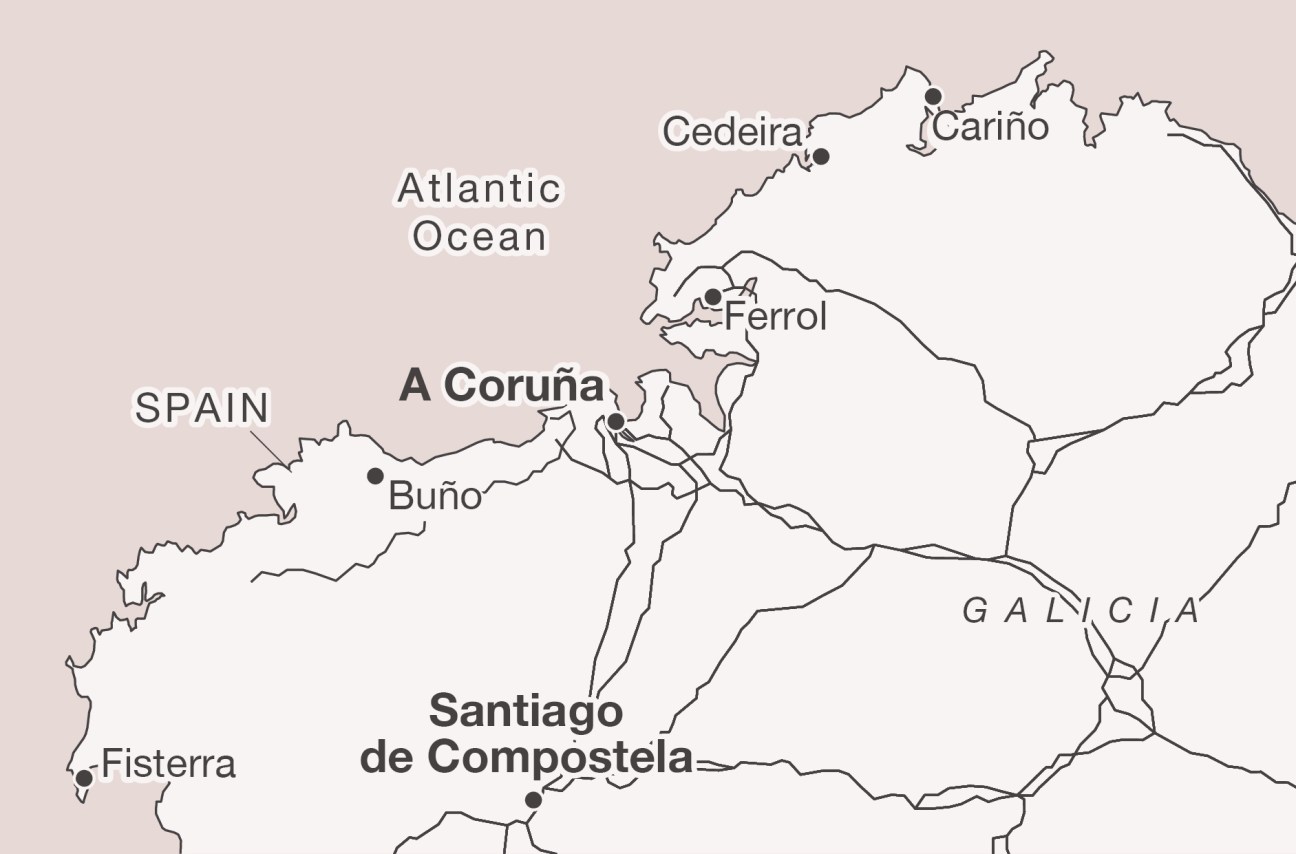
Day 1
Cariño to Cedeira
Our hopscotching journey across Galicia’s northern estuaries begins on the western bank of the Ría de Ortigueira in the town of Cariño. The tide is high as we approach and the multihued fishermen’s houses of the barrio marinero seem to hover on the salt-sprayed cliffs rising above the brackish waters where estuary meets ocean. In the late 19th century, Galicia’s rías were put on the map when fish and seafood caught in their waters began to be preserved in tins for international export. The demand for those conservas (including sardines, tuna and mussels) led to the development of a network of canneries next to village fishing ports.
While Cariño once had more than 20 such factories, today just one remains: La Pureza, a family-run affair founded in 1924. When we arrive, shoppers are queueing out of the door to pick up mackerel and conger eel preserved in olive oil. Conservas are still big business in Galicia, with exports rising in the past decade to €800m a year – more than half of the country’s exports in the sector. La Pureza’s 14 employees prepare and package fish according to traditional methods. Ana Docanto, our tour guide, is one of four siblings at the helm of the cannery founded by their grandfather. “We could have expanded by incorporating more machinery,” she says as we continue through the busy processing floor where red-and-yellow cylindrical tins are stacked high. “But we prefer tradition.”
A loaf of crusty bread and scallops in La Pureza tomato sauce make the perfect aperitivo during our stop at Cabo Ortegal, a 10-minute drive north from Cariño. From this cape’s red-and-white-striped lighthouse, you can take in spectacular views of the Capela da mountains, which descend into the roiling Atlantic. We head back into Cariño with fresh salt spray in our hair, ready for lunch at Restaurante Marea, where we tuck in to cockles in a creamy ginger-orange sauce, along with baked cod served over seaweed risotto.
After our meal, we drive into the Capelada mountains for 15km to reach San Andrés de Teixido. The sea-facing hamlet is home to a pre-Christian shrine. It was chosen by the Celtic ancients for its views, which remain divine to this day. There is even a saying in Galego, “He who goes not to San Andrés de Teixido in his lifetime will visit after death.” This is based on a legend that those who fail to venture up will be punished in their afterlives, reincarnated as lizards and snakes. Pilgrims must drink from each of the three spouts of the shrine’s fountain upon arrival in order for Saint Andrew to grant their wish.
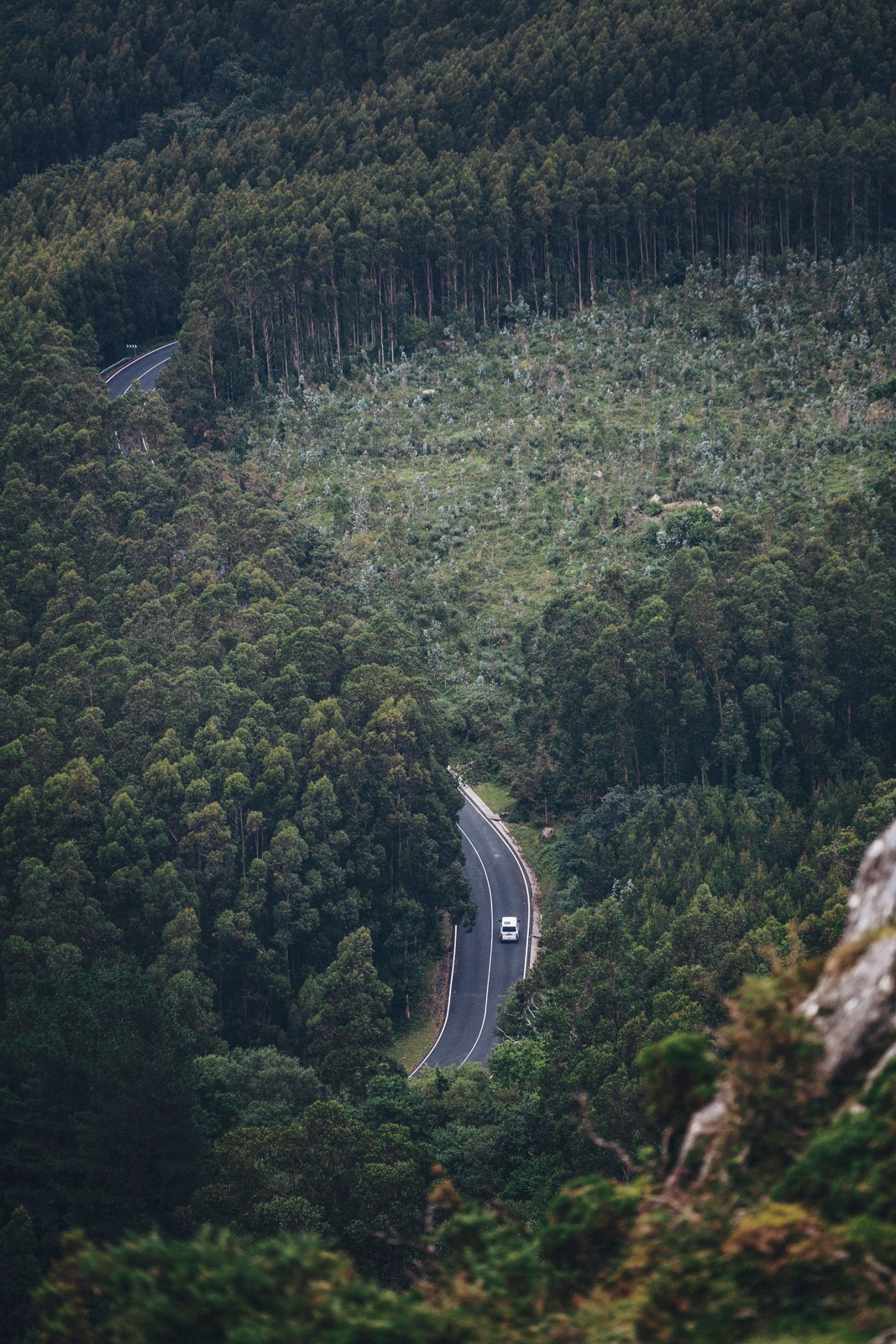
Not one for superstition, Monocle takes its leave, following the winding road down to Cedeira. This town, set on the eastern bank of the Cedeira Estuary, has been linked to whaling and fishing since the Middle Ages. Today it is known for its goose barnacles, or percebes. This delicacy must be hand-picked by nimble percebeiros, who face the risk of being struck by massive waves as they navigate the coast’s slippery rocks on foot to reach certain nooks; only in these can the tasty – but almost unforgivably ugly – barnacles be found. Restaurante Badulaque, a three-minute drive from Cedeira’s fish market, is the perfect place to sample freshly caught percebes, as well as langoustines, clams and spider crabs.
Cedeira’s seafront gives way to an elegant promenade where the Condomiñas river bisects the historic centre. It is a good vantage point from which to see how the town has evolved from fishing village to resort. As paddleboarders make their way upriver and children leap from the wrought-iron bridge into the waters, we approach our next stop. Os Cantís is a nine-room inn set in a restored townhouse, which was built in the early 20th century and once served as a priest’s residence. Hoteliers Fernando Cheda and Dolores López, together with interior architect Belén Sueiro, preserved the three-storey building’s gleaming white façade with wrought-iron terraces in a 2024 renovation. “It was more difficult and costly to build each floor with wood rather than concrete,” says López. “But while the process wasn’t very practical, it was in line with our ‘Take it or leave it’ philosophy, as well as our attention to detail.” Several rooms also feature the original stone walls. Outside, the river-side terrace is an ideal spot for savouring a glass of white wine paired with monkfish a la cedeiresa.
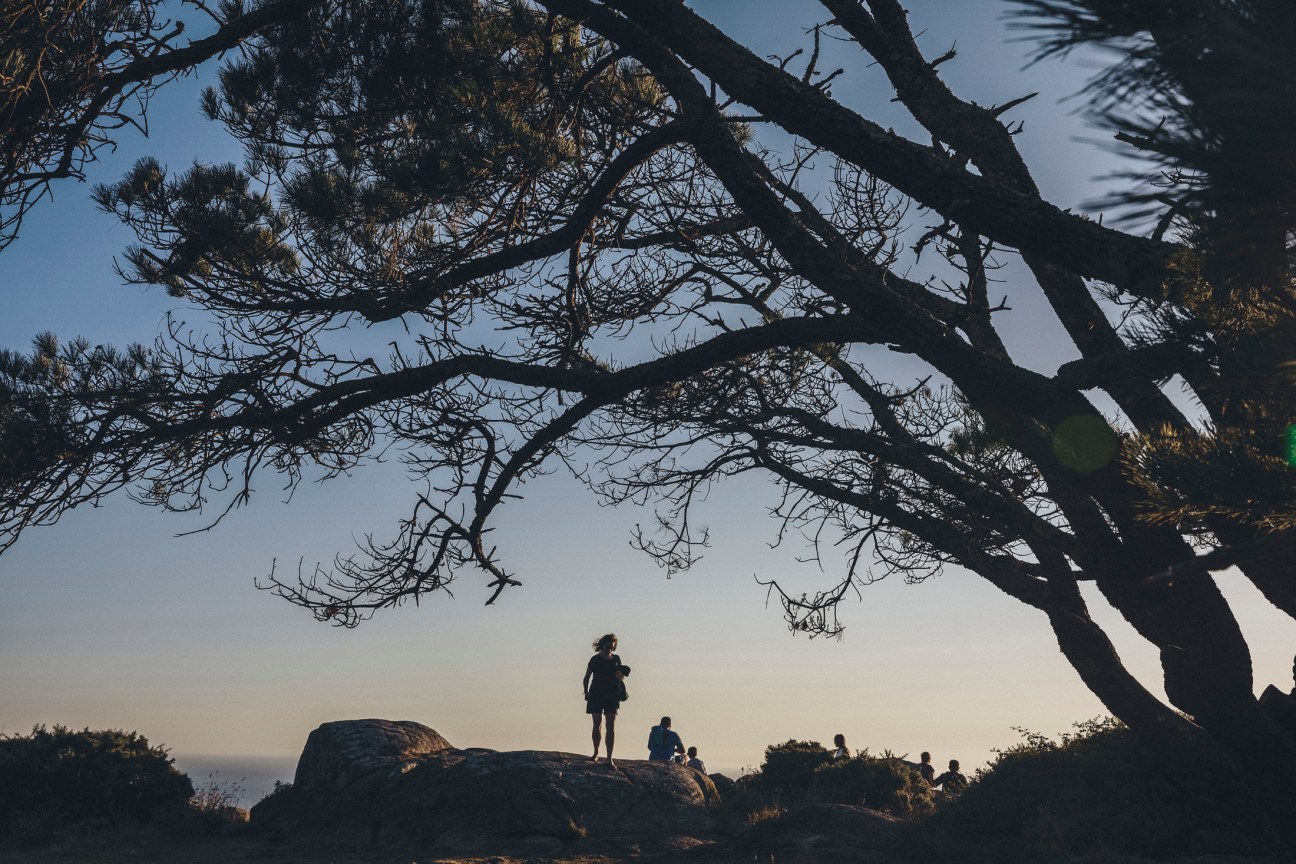
Day 2
Ferrol to A Coruña

Leaving behind the quiet fishing villages we venture to the city of Ferrol, located on a narrow-mouthed ría of the same name. Thanks to its sheltered geography and deep natural harbour, Ferrol has been a shipbuilding hub since the early 18th century. The city’s Magdalena neighbourhood comprises a rectangular grid of lanes, featuring two and three-story residences built in the 19th and 20th centuries. Many of the upper levels of the houses here feature enclosed terraces, or galerías, inspired by the window-lined sterns of galleons. Galician architect Rodolfo Ucha Piñeiro contributed numerous art nouveau gems to the barrio, such as Casa Pereira, which features oversized circular windows that dominate its façade.
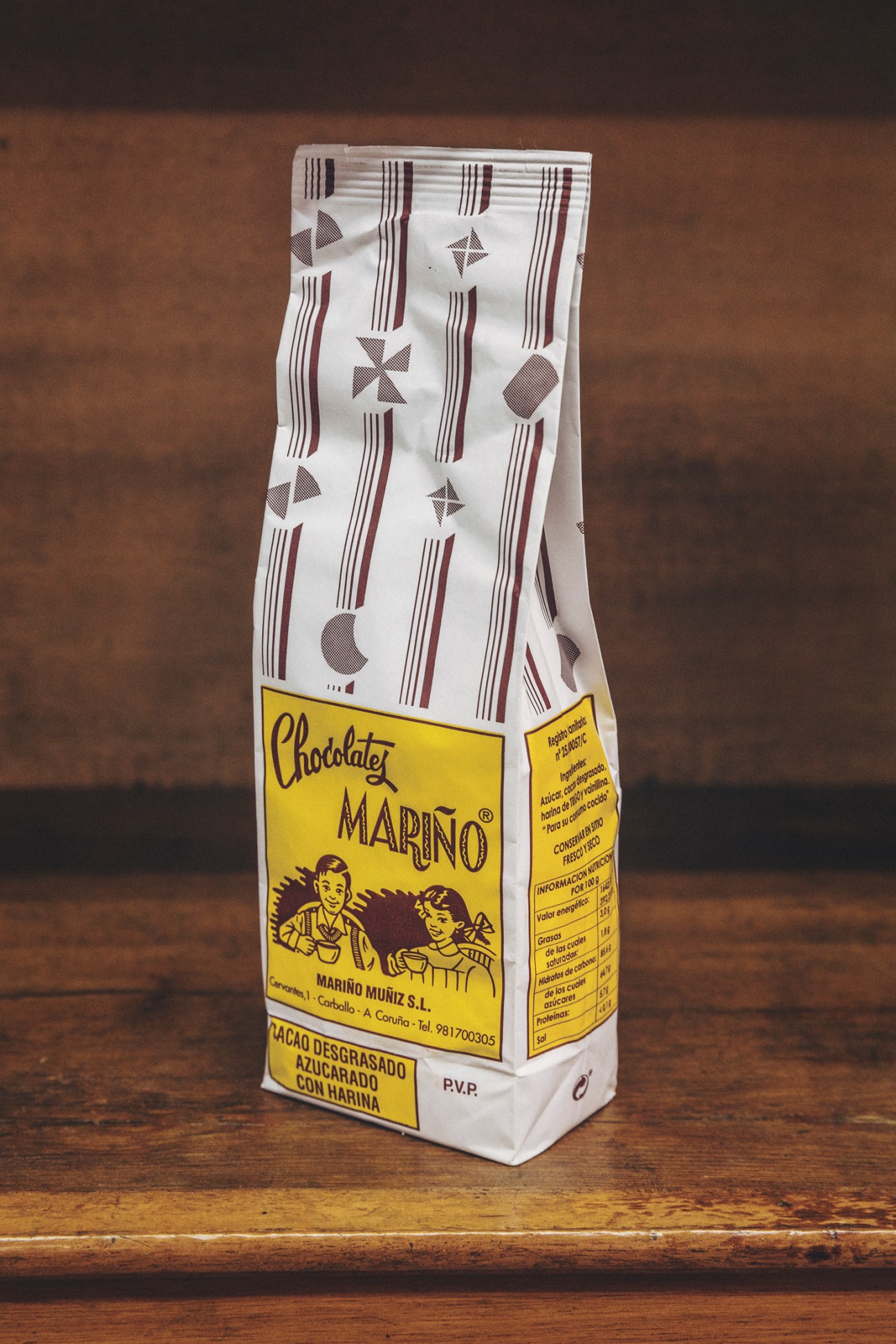
Strolling past the terrazas and shops that line the pedestrianised Rúa Magdalena, we reach an unusual threshold. It is made from white marble and inlaid with black block letters, reading “El Rápido”. The shop opened in 1922 as an ultramarino, a Spanish general store, which specialised in items such as chocolate, coffee and rum that came from overseas colonies. Owner Emilio Castro, an effusive 83-year-old, smiles from behind the oak counter and has a kind word for anyone who steps in. Some come to shop, others simply to check in on Don Emilio, as everyone calls him. “I am a neighbour,” he says.
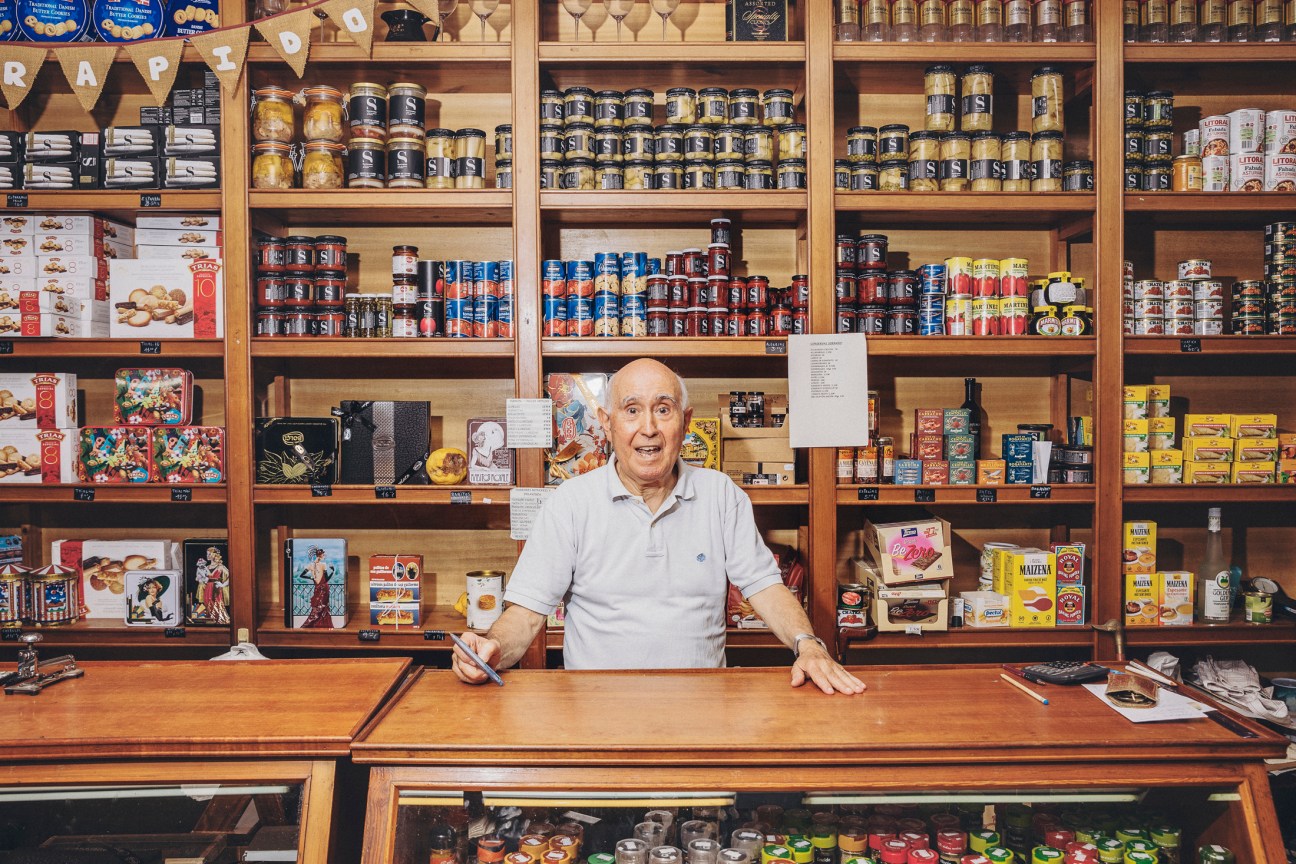
Castro took over the shop from his father 66 years ago, and transforms the everyday act of shopping for groceries into something uplifting and memorable. At the behest of a customer, he gladly reaches across the countertop for an oversized glass jar of cascarilla, the shells of cacao seeds with medicinal properties, which few shops still sell. When customers leave, he bids farewell with a wink. And the jolly sage makes sure to warn us against prisas, or rushing, before we leave. “My friend,” he says. “Hurrying is of little use.”
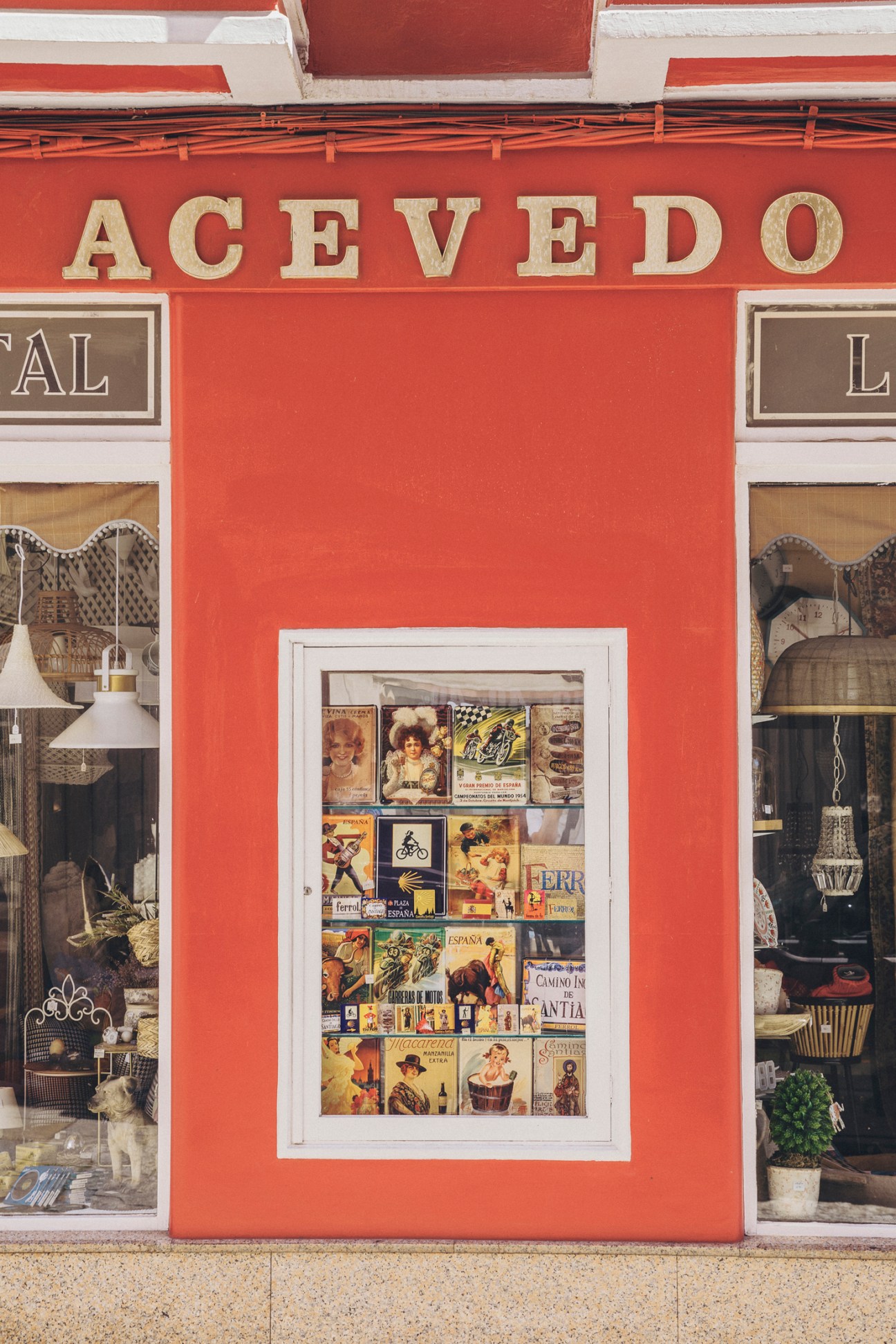
But we don’t need to rush to savour a flavour usually associated with Portugal at the Lusitânia Café, one street over from El Rápido. The custard tarts there serve as a sweet reminder of Galicia’s proximity to the home of pasteies de nata, and their intermingling cultures.
Time is a recurring theme in Galicia. This is perhaps due to the proximity of the shore, where the ocean’s waves slowly carve the dramatic coastline of the region. Ramón María del Valle-Inclán, one of the most celebrated 20th-century Galician writers, wrote, “Nothing will be that did not come before. Nothing will be that does not belong to tomorrow.” Those with the time to contemplate this will surely see how the words reflect on Galicia itself.
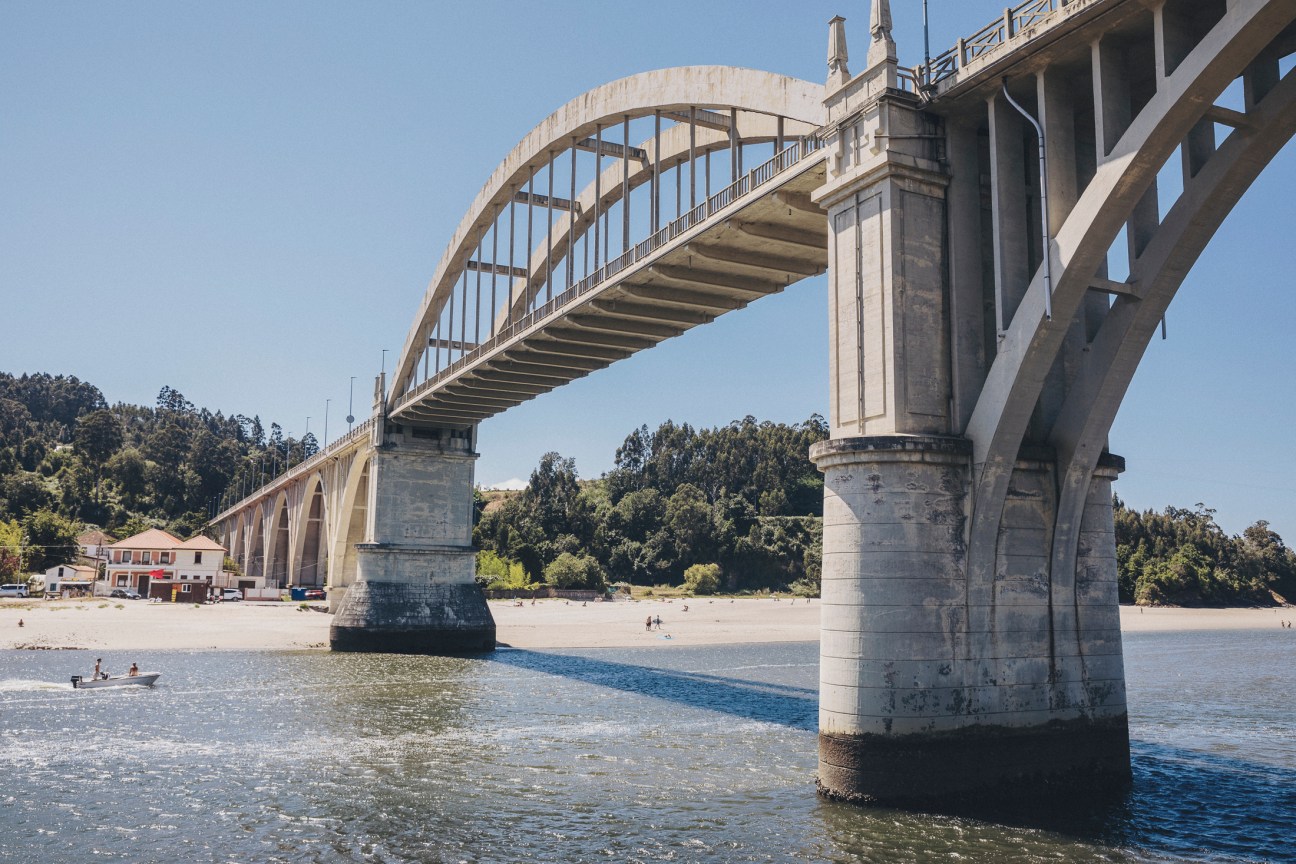
Next stop is the bustling port city of A Coruña, where we meet watchmaker David Rodríguez. In addition to searching out and repairing fine analogue timepieces, he is responsible for maintaining the city’s oldest public clocks. His workshop, Relojería Nemesio, is steps from the city hall’s clocktower, where he fulfils his civic duty. “I must climb up there every day to wind it, including Saturdays and Sundays,” he says. “Would you like to see?”
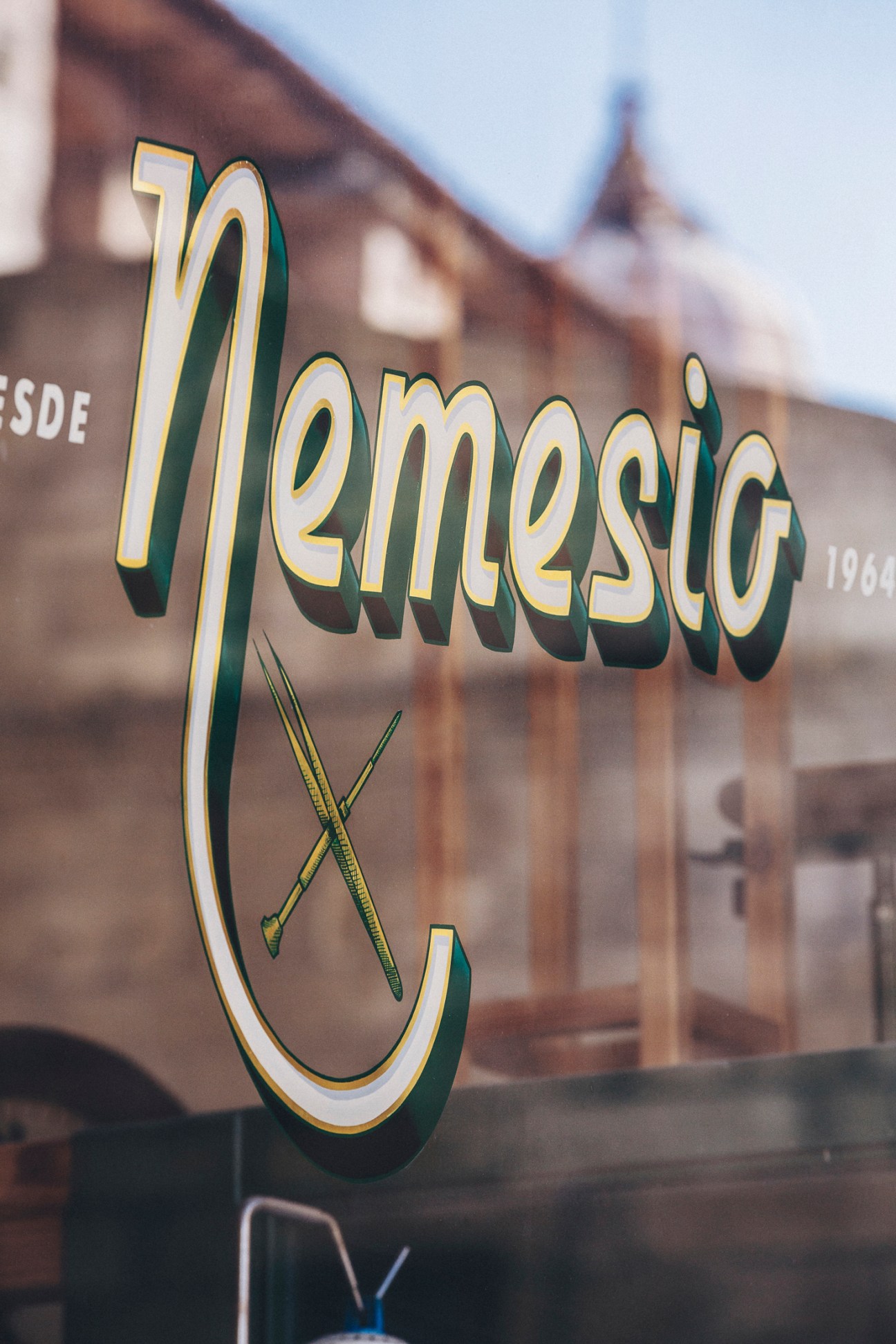
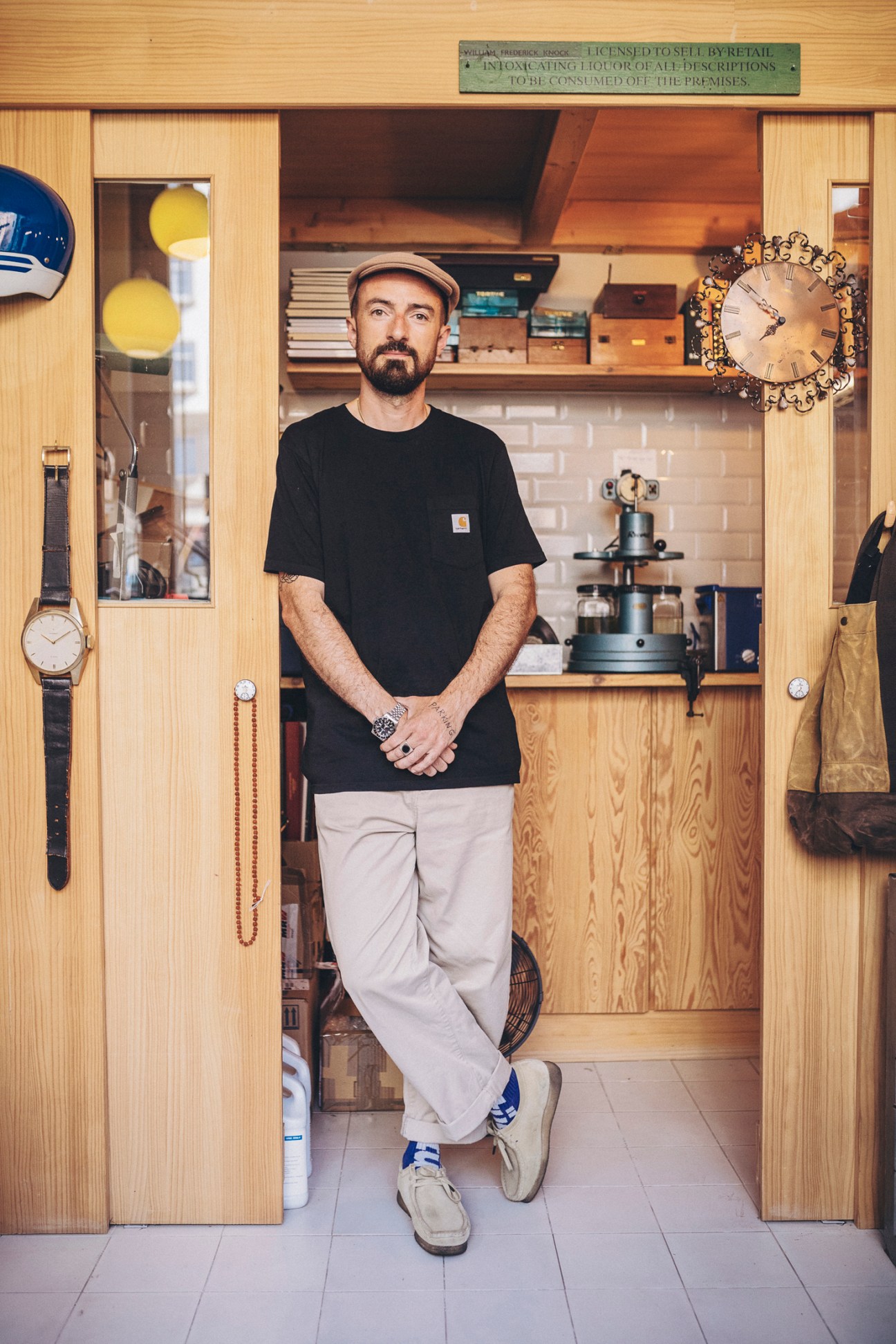
An elevator takes us up three storeys from an ornate entrance hall, after which we ascend four flights of increasingly narrow stairs. From the clock tower’s pedestal, perched over the portico-lined Plaza de María Pita, we take in sweeping views of A Coruña’s rooftops and marina. Rodríguez tells us about the clock that dates back to 1909; he drove an initiative for its restoration in 2020.“Throwaway culture is not for me,” he says. “Rather than helping humans, fully automated objects actually limit our capacity to respond. I like to interact with life, with the world.” Loud thwacks fill the tower as Rodríguez pushes the hand-crank. When he comes to rest, he reveals that this old commitment could be aided by a modern intervention. “I’m working on a special adaptor, which could wind the clock using electricity, in case I can’t come up here on a given day.”
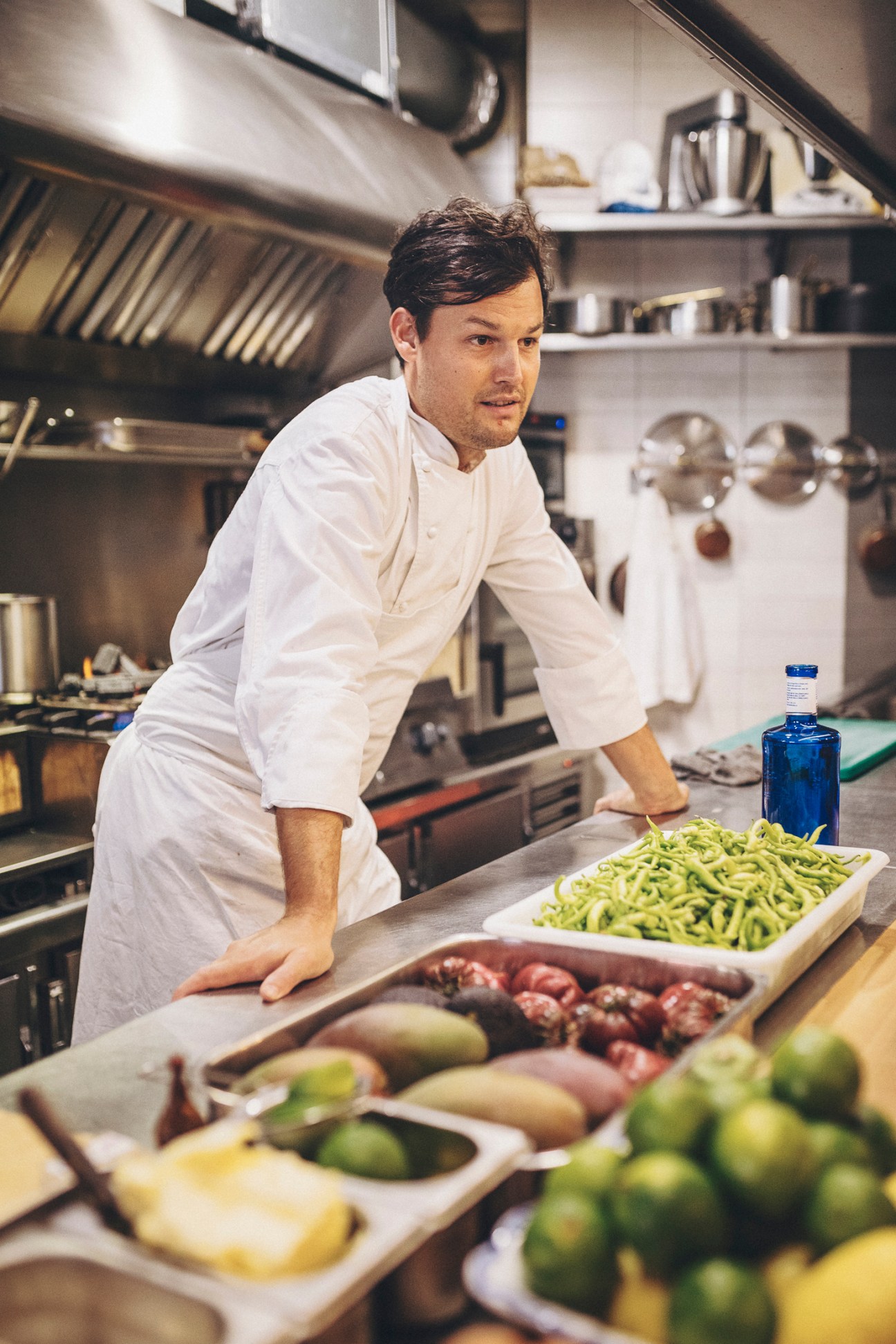
The restaurant 55 Pasos sits alongside the plaza. We take our seats at the wooden counter, which opens onto the kitchen. Chef Balázs Menyhard toasts bread over Japanese coals and his partner, floor manager Nataly Rodríguez, cuts paper-thin portions of cured beef from León with the deli slicer. Once the space’s eight tables are full, Rodríguez calls the diners to attention to announce the day’s dishes. From Thai green mango salad to Galician beef sweetbread, the menu demonstrates a commitment to using the best raw ingredients from the market on any given day. “Balasz has always said that we would end up opening a restaurant together,” says Rodríguez.
The pair met while working at The Berkeley hotel in London, with Rodríguez in management and Menyhard in the kitchen of its two-Michelin-starred restaurant. With their ties to the British capital – both also went on to work at Hedone in the city’s Chiswick neighbourhood – it came as a surprise when they ended up in Rodríguez’s hometown in 2019 and opened 55 Pasos.“We were told ‘no way’; there is no market in A Coruña,” says Menyhard. His fingertips massage an orb of burrata from Puglia, to which he will add the bright purple leaves of local basil. He interrupts his preparation to hop out of the kitchen and commence a lively conversation with a curious diner at a nearby wine fridge. They eventually settle on one of the restaurant’s biodynamic bottles. “I love wine, maybe more than food,” he says with a giggle. “But as a chef, I’m not supposed to say that.” As we tuck into a poppy seed-covered eggy bread for dessert – a recipe from Menyhard’s native Hungary – we can’t say that we are worried about the chef’s priorities.
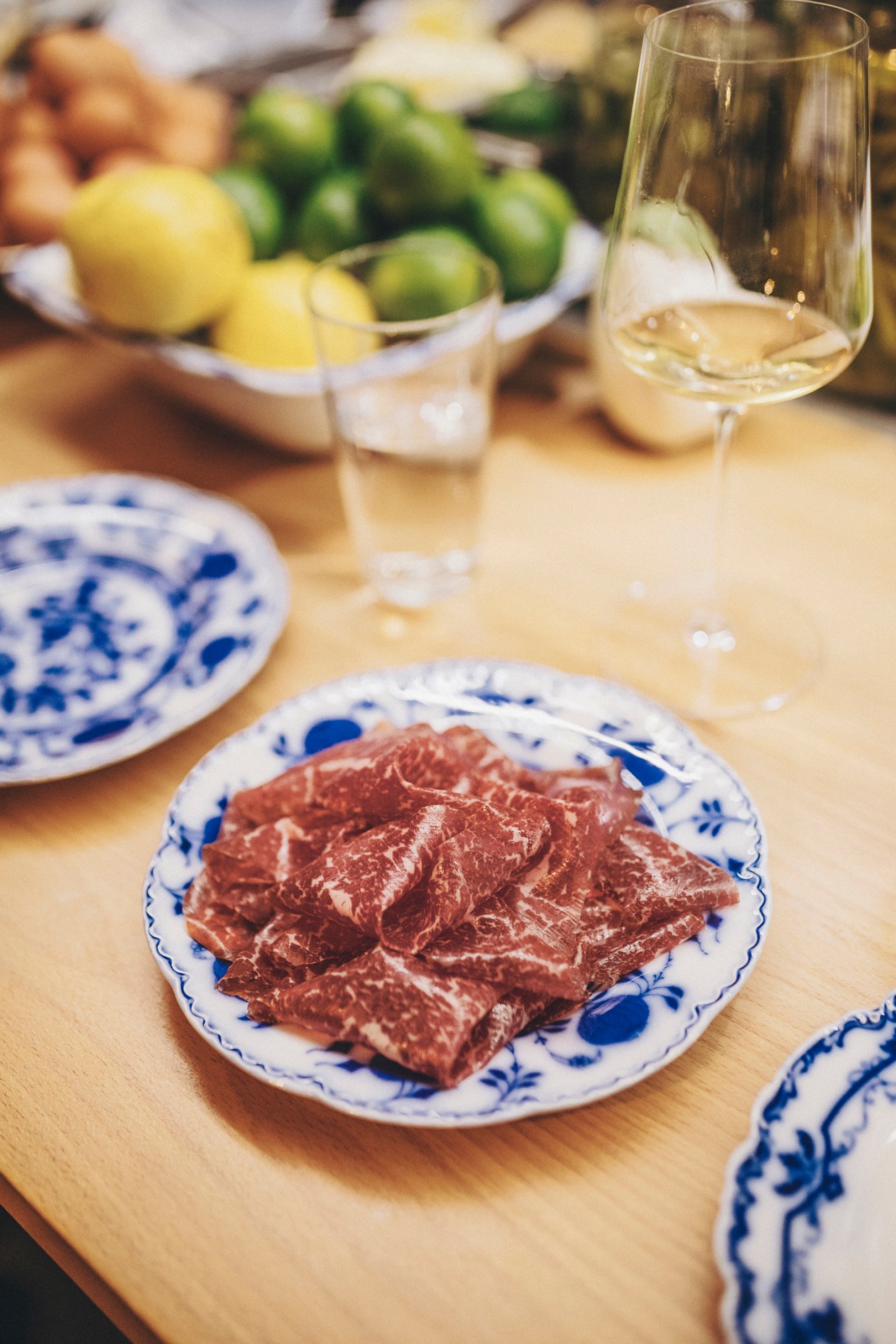
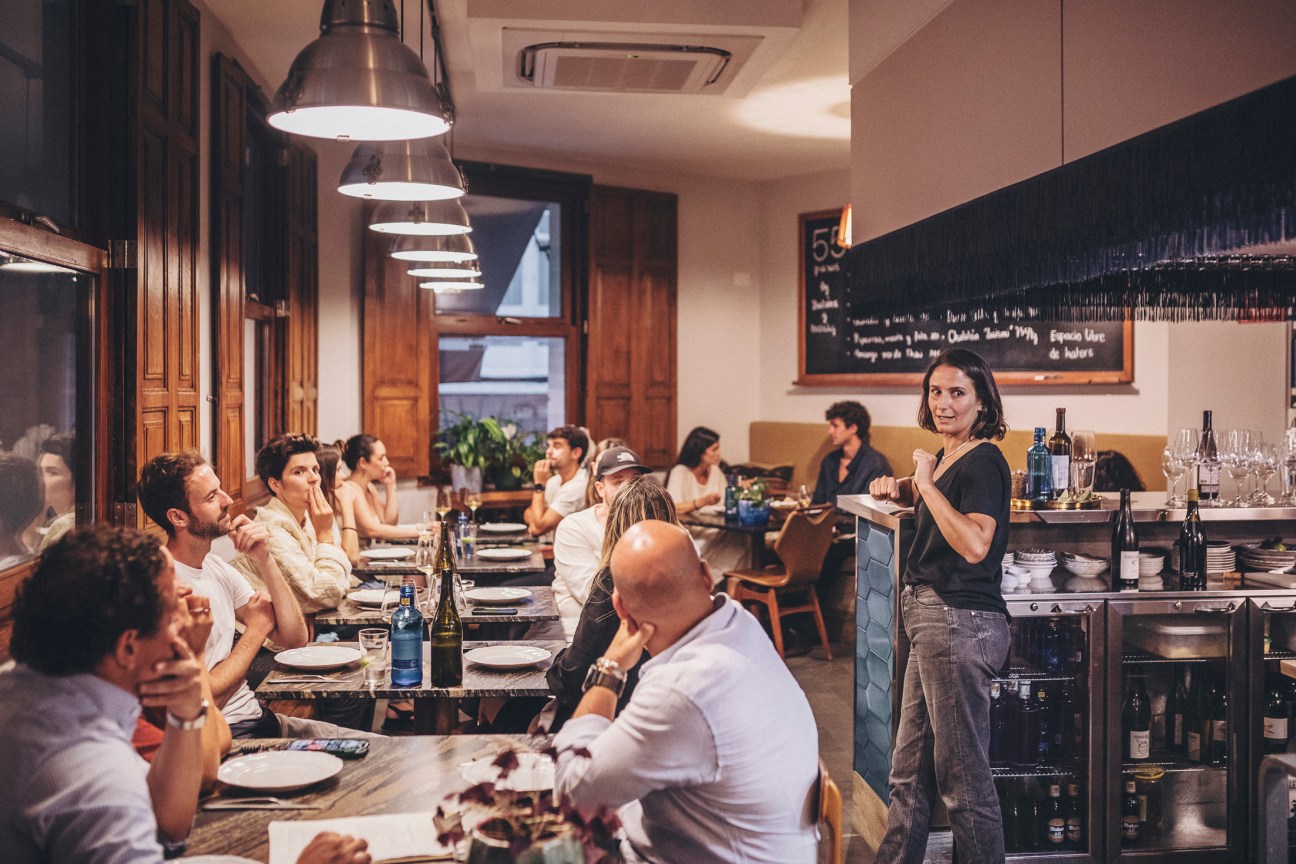
A 20-minute drive brings us to Noa Boutique Hotel, on the opposite side of Ría da Coruña’s bay. Here we enjoy a fiery sunset from the rooftop infinity pool. Designed by local architectural firm Sinaldaba, the hotel’s 32 minimalist guestrooms all boast sea views. The 16th-century Castelo de Santa Cruz completes these vistas, 140 metres from the shore and reached via a wooden footbridge. Time has escaped us once again. Bed beckons.
Day 3
Buño to Fisterra
We start the day with a bracing swim, then check out. Green hills with leafy oaks and poplars dot the landscape as we drive southwest, past A Coruña. After 40 minutes, we arrive in Buño on the Costa da Morte.
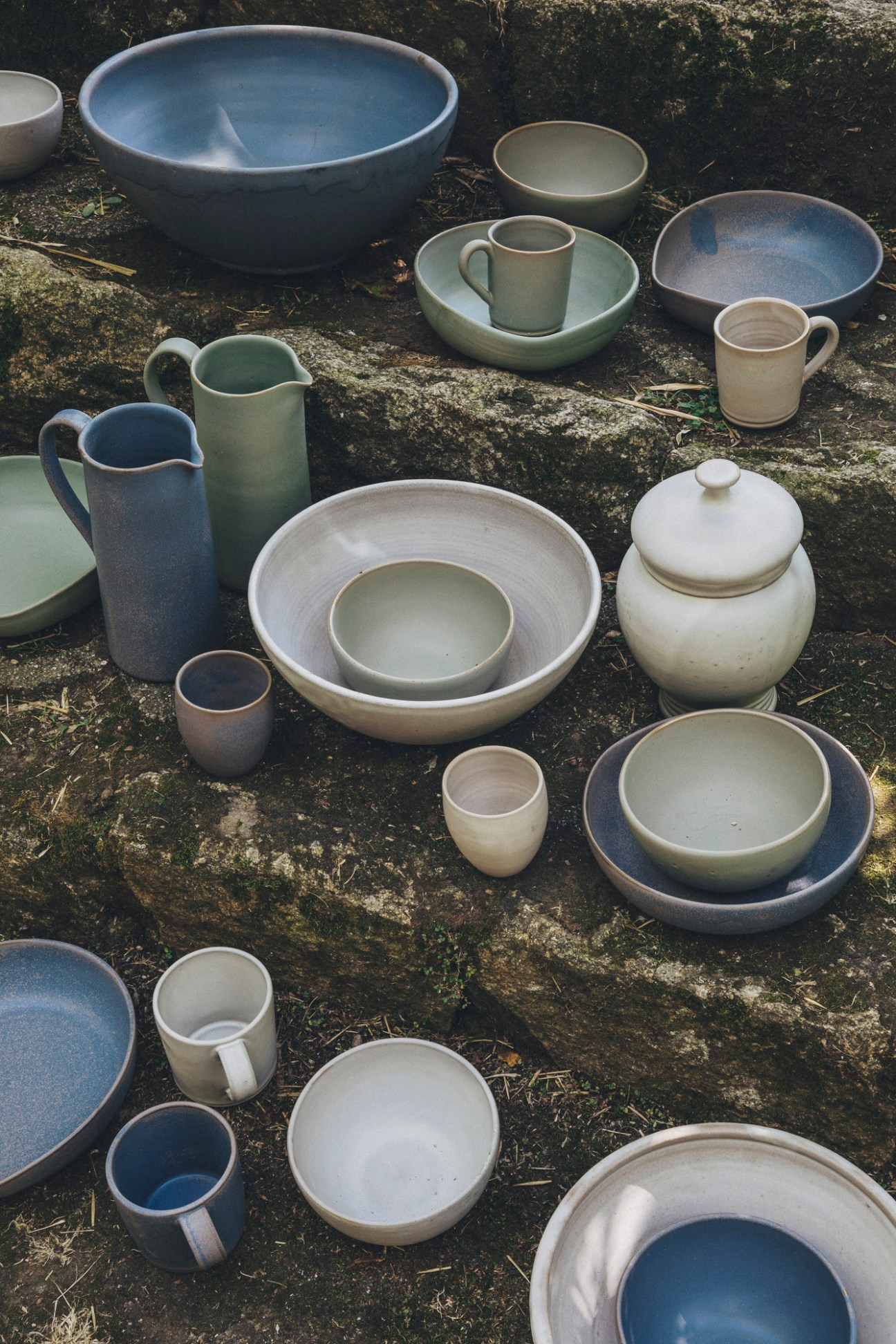
This village is known for its oleiros, clay artisans who have been crafting their wares there since the 16th century. Ceramicist Alberto Lista was initiated in his craft by his father, who apprenticed under Lista’s grandfather. “Generational knowledge has been passed down in Buño as far back as anyone can remember,” says Lista, who greets us in a black, clay-specked work apron at the door of his shop, Alfarería Lista. He recently took over the establishment from his father, who is now retired. Though in the 1950s about half of the village’s residents were potters; today only eight workshops remain. “I decided to uphold this tradition,” says Lista.
Lista is part of a wave of young innovators bringing a design-focused approach to Galician pottery. Incorporating 3D-printing techniques has allowed him to produce increasingly thin clay objects for special commissions. “People are seeking simplicity more and more,” he says. “I like that. I’m quite basic myself. I work with simple colours and shapes that aren’t overly complex.”
We hop in the car for a quick 10-minute drive to reach O Fontán Restaurante for lunch. The restaurant is in a stonework casona, or stately residence, which the owners believe was built in the 19th century. It focuses on traditional local dishes such as grelos (broccoli rabe) and a supremely tender presa de cerdo celta, pork shoulder from a local breed of pig.
This part of the region is known as Costa da Morte largely thanks to the notable shipwrecks that took place in its rocky waters during the 19th century. Despite the preponderance of beaches – Galicia is home to more than 850, the most of any Spanish region – it is particularly important to choose sheltered coves and rías for swimming as currents here can be very strong.
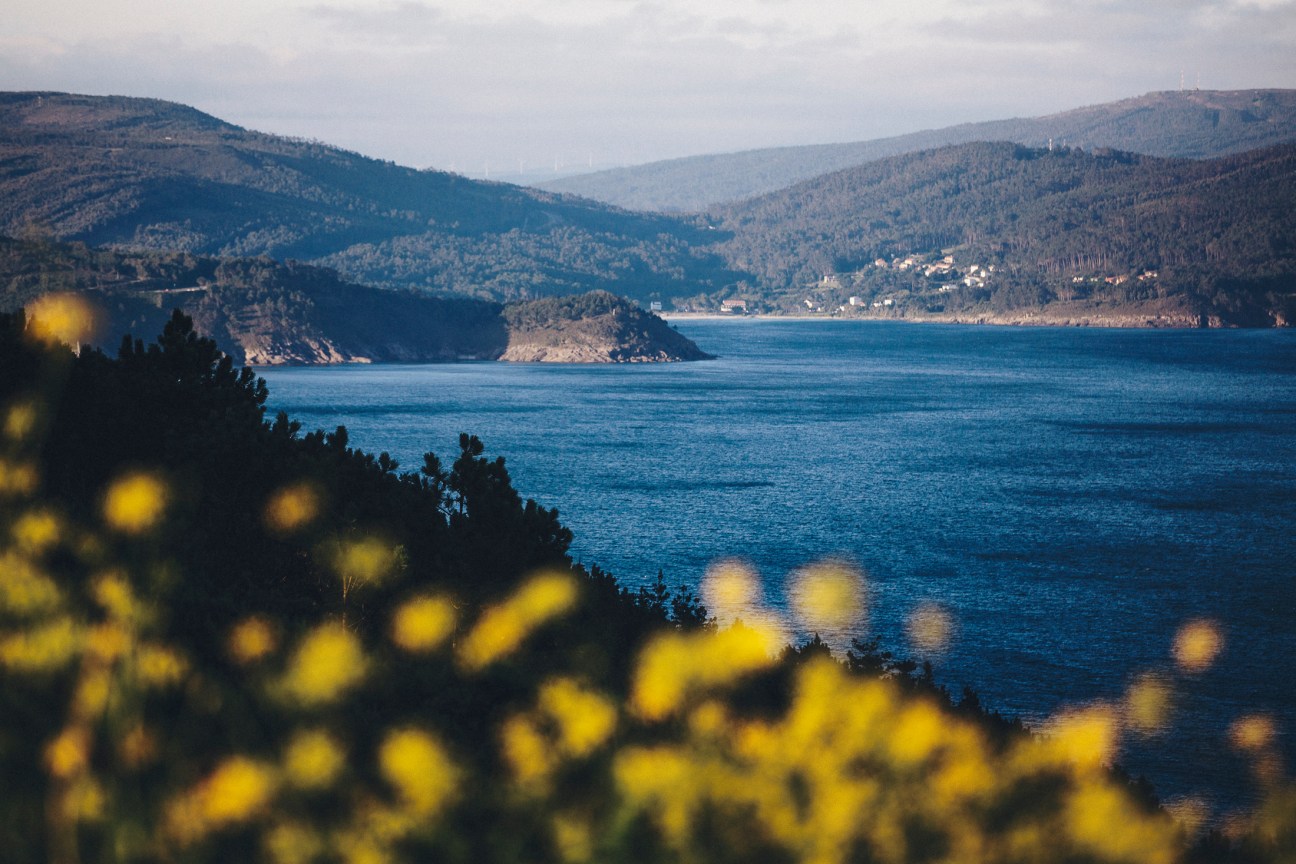

We drive 15 minutes to Praia de Laxe before beach- hopping to the hamlet of Arou – a further 40 minutes southwest through hillsides rich in seaside pines. You can learn about local bobbin lace artisans in the fishing town of Camariñas. They are said to have learned their craft from Italian women who were rescued from a nearby shipwreck. Lucky for us, we have blue skies and calm waters ahead as we arrive in Fisterra. The name is derived from the Latin Finis Terrae, which is where the “end of the world” phrase comes from. This city’s lighthouse is the traditional conclusion to one of Christianity’s oldest pilgrimages, the Camino de Santiago, which dates back to the 9th century. Our pilgrimage, however, is of the culinary variety.
It is well known across Spain that Galicia boasts spectacular fish and seafood. A few steps from the sands of Praia da Langosteira is the restaurant Tira do Cordel. The dining rooms in the former salting factory surround a large courtyard grill, where neat rows of wild-caught sea bass and scorpion fish are roasted to perfection. Try their almejas a la marinera (clams in white wine) or longueirón (a local variety of razor clam). After dessert we walk down the stone steps just outside the restaurant and onto the beach for some sun followed by a bracing swim. We stroll up the shore to a nearby hotel as the tide rolls in.
Hotel Bela Fisterra is a remarkable seafront lodging with a literary bent. Each of its 15 rooms have names drawn from sea-inspired literature, including Moby Dick and The Odyssey. Founded in 2018 by Pepe Formoso, the hotel uses energy drawn from solar panels and heating supplied by geothermal pumps, which help it to achieve zero-carbon emissions. Keeping the design locally inspired, Formoso enlisted A Coruña-based architectural firm Creus e Carrasco to create the minimalist structure that is intended to evoke the fish-salting facilities that were once prevalent along the shore. Inside, furniture designs by Galicia’s Isaac Piñeiro are modern while retaining a joyful spirit and a sense of place that is utterly unique to the area.
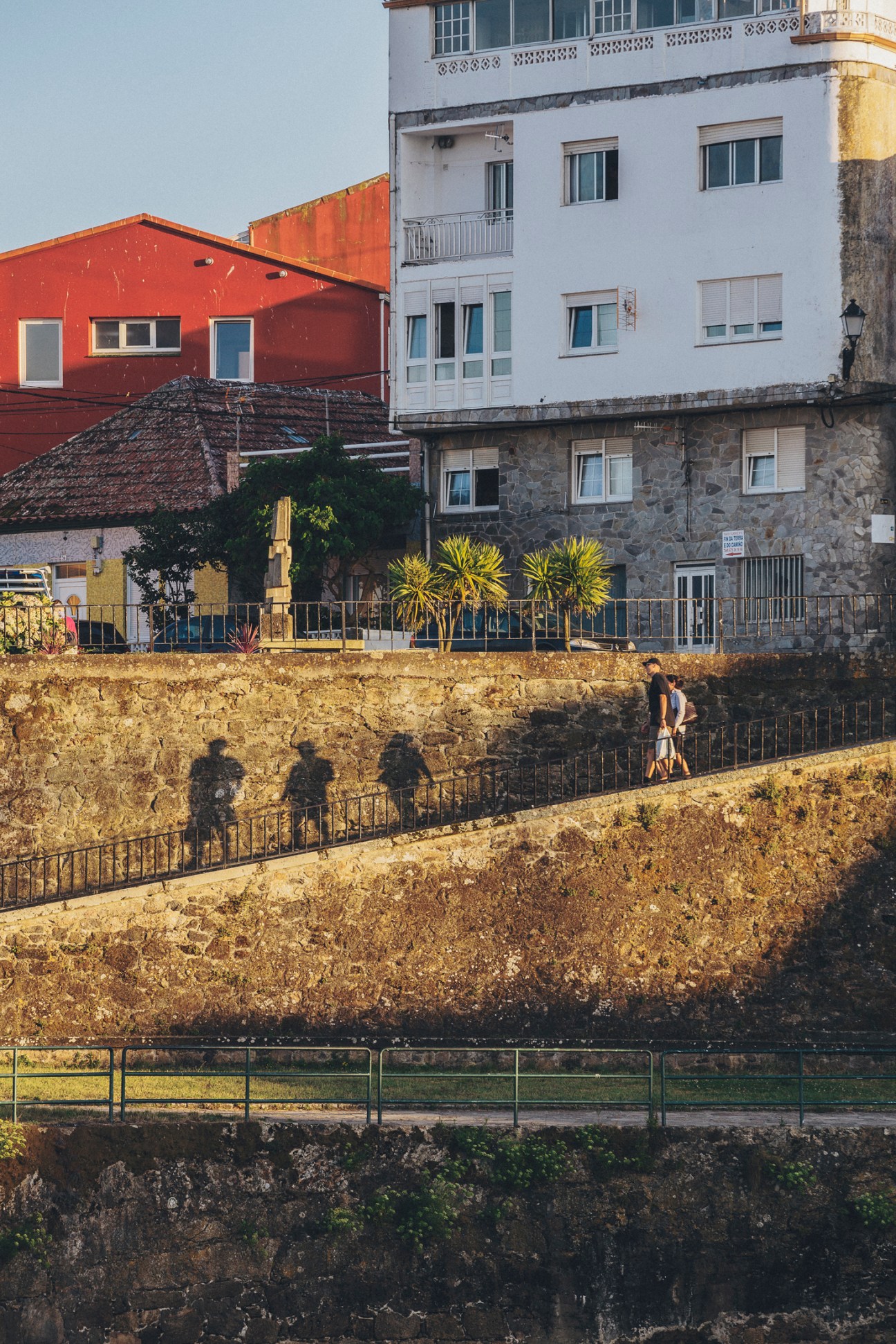
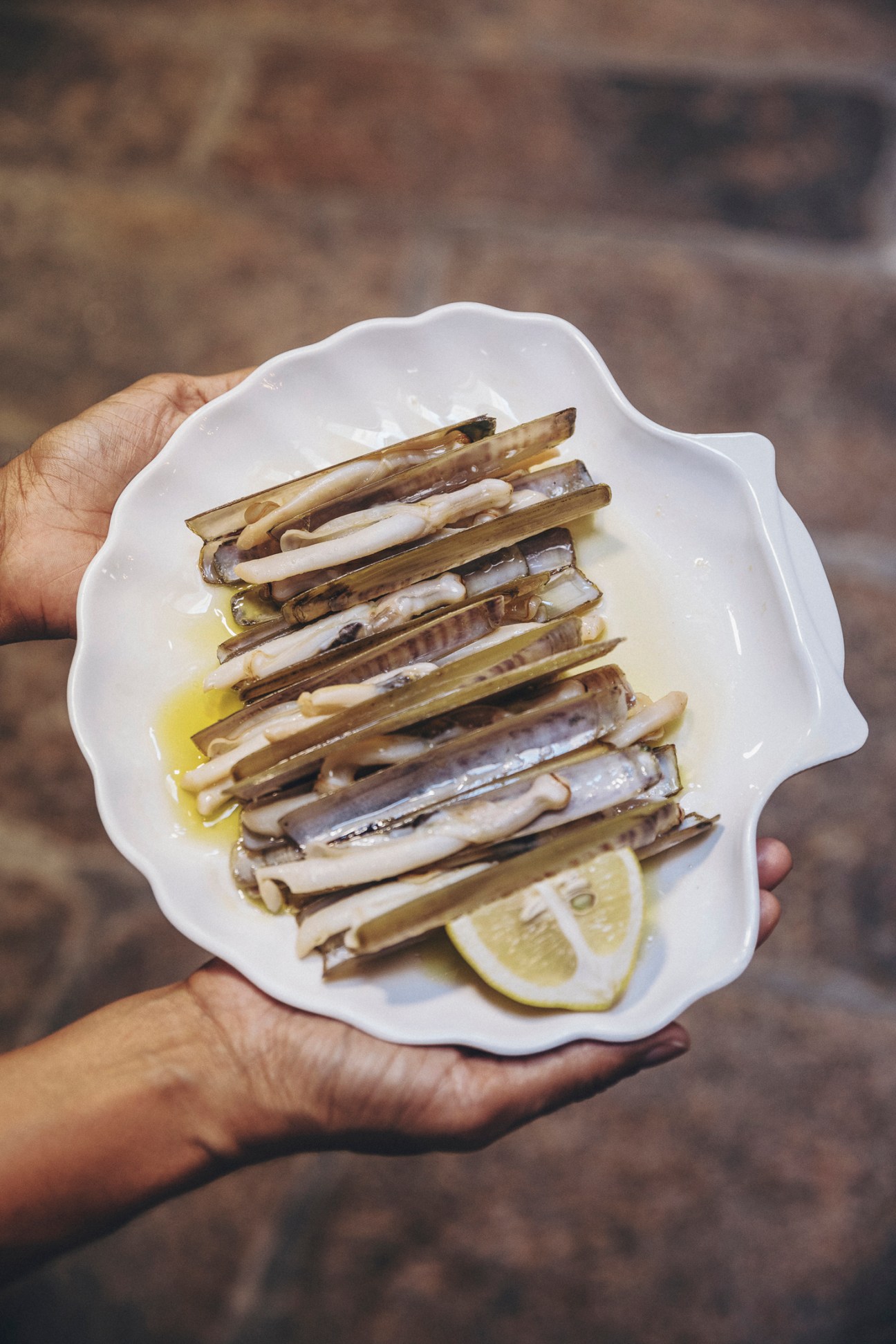
Laying on a lounger of the hotel’s terrace, overlooking the water as the sun’s dying rays tinge the clouds pink and orange, Galicia feels at once modern and ancient. Somewhere worth exploring, regardless of the time of year. “There’s nothing more beautiful than observing a storm from the water’s edge,” says Formoso. “The vitality of the salt air in Galicia can and should be enjoyed all year.”
Galicia address book
Day 1
Stay: Os Cantís
This family-run inn in a restored turn-of-the-century townhouse brings chic modernity to a little-visited part of the Galician coast.
hoteloscantiscedeira.com
Eat: Restaurante Badulaque
Visit this restaurant in the Casa do Pescador for the freshest seafood. This is where local fishermen meet after hauling in the day’s catch.
Rúa Area Longa, Cedeira
Shop: Conservas de Pescado La Pureza
This canning facility, now run by the founder’s grandchildren, is the perfect place for buying gourmet treats to go, such as tinned fish and mussels.
lapureza.es
Day 2
Stay: Noa Boutique Hotel
Not only does each room in this minimalist accommodation boast sea views but it is possible to enjoy a bathtub soak while looking out across the water thanks to cleverly designed glass partitions.
noaboutiquehotel.com
Eat: 55 Pasos
Reserve well in advance: diners come from near and far to enjoy chef Balázs Menyhard and floor manager Nataly Rodríguez’s unique take on dining. Each meal is a celebration of the best market ingredients, it will not soon be forgotten.
Rúa Nosa Señora do Rosario, 9
Shop: El Rápido Ultramarinos
While this type of corner grocer was once ubiquitous in Spain, the ultramarino is now a dying breed. Visit Emilio Castro in this centenary business to find that friendly service and quality products can still go hand in hand.
Rúa Magdalena, 139
Day 3
Stay: Hotel Bela Fisterra
The only literary lodging in the region is also an architectural gem with sustainability at its core. Visit this seaside oasis off season to partake in its vibrant cultural calendar.
belafisterra.com
Eat: Tira do Cordel
Old-school hospitality is front and centre at this local favourite, where grilled sea bass is king.
tiradocordel.com
Shop: Alfarería Lista
Potter Alberto Lista puts a modern spin on earthenware vessels, elevating cookware to the status of sculpture.
alfarerialista.com
It began as a whisper, an intriguing proposition. As interest surged, it grew to a chorus chanted from London to Los Angeles: “Visit Albania!” “It’s like the Cayman Islands but in Europe!” “It’s like Greece but half the price!” “The waters are as blue and warm as the Caribbean Sea itself!” The Balkan nation is now, according to the chatter, the place to go to enjoy a sun-drenched, beachside European getaway with an aura of post-communist exoticism. To verify these claims, Monocle set out for the 120km-long southern stretch of coastline dubbed the Albanian Riviera (no doubt by a marketing-savvy clerk at the National Tourism Agency with a penchant for chic suffixes).
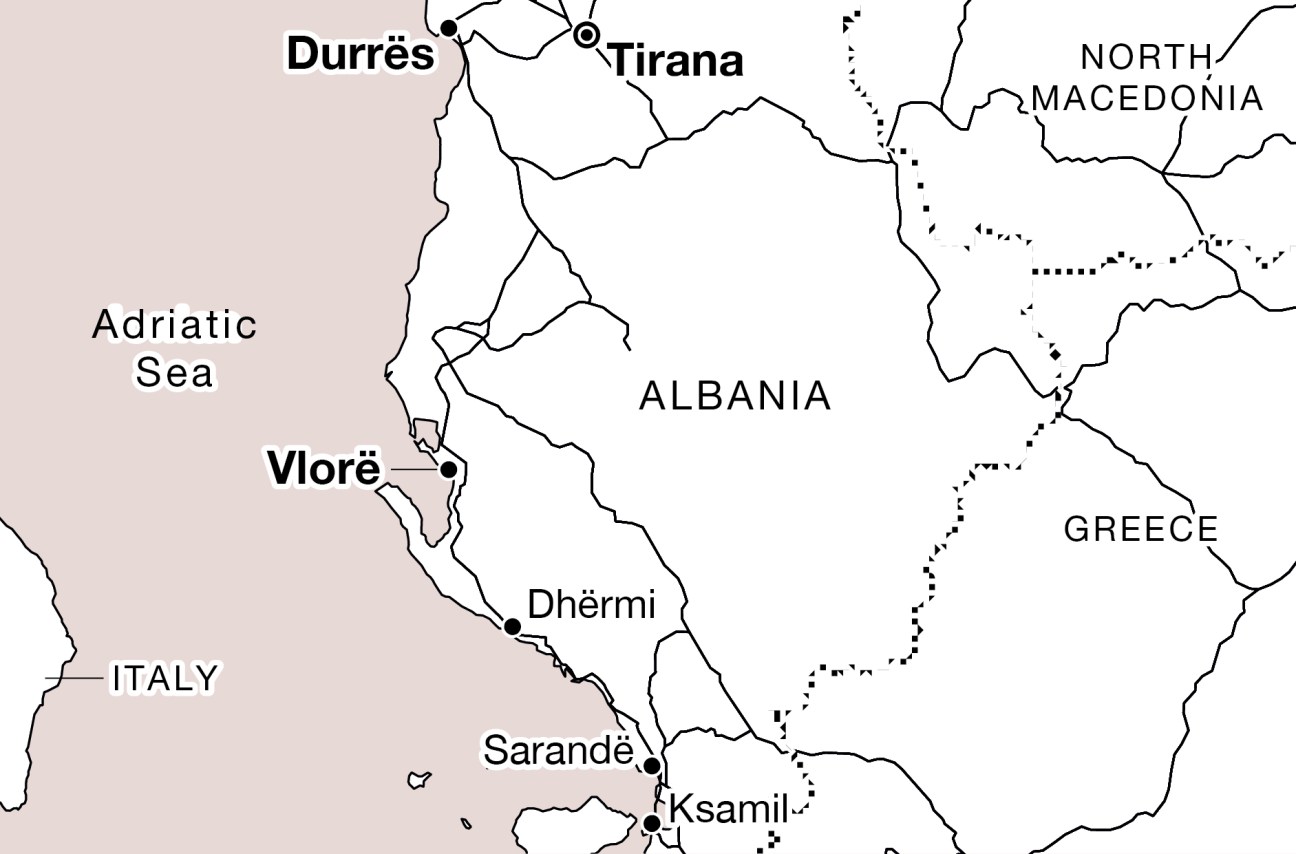
One of the easiest ways to access the southern tip of Albania is to board a ferry from Corfu or the Puglian city of Bari and cross the sea to Sarandë, a port town with pizzerias, cocktail bars and gelaterias that line its tidy promenade. Here, vendors in canopied stalls hawk carved wooden goods and football shirts to passers-by. The mountains that cradle the bay heave with hotels and apartment blocks featuring sea-facing balconies. Sarandë’s main draw is its convenience as a launchpad for the rest of the region. Turn right from the port to go south or left to go north. A further 20-minute drive will bring you to a rocky beach with velvety blue waters.
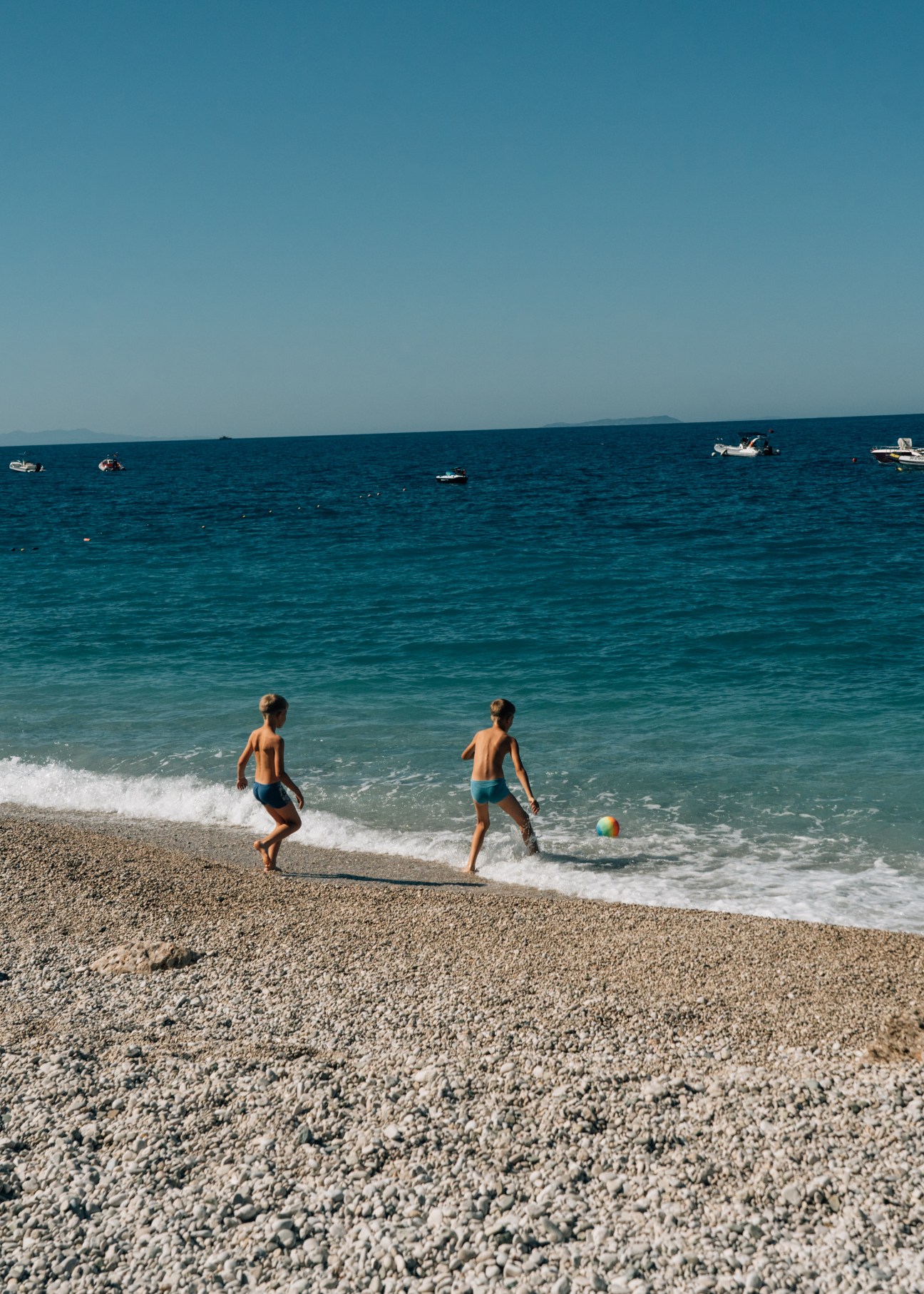

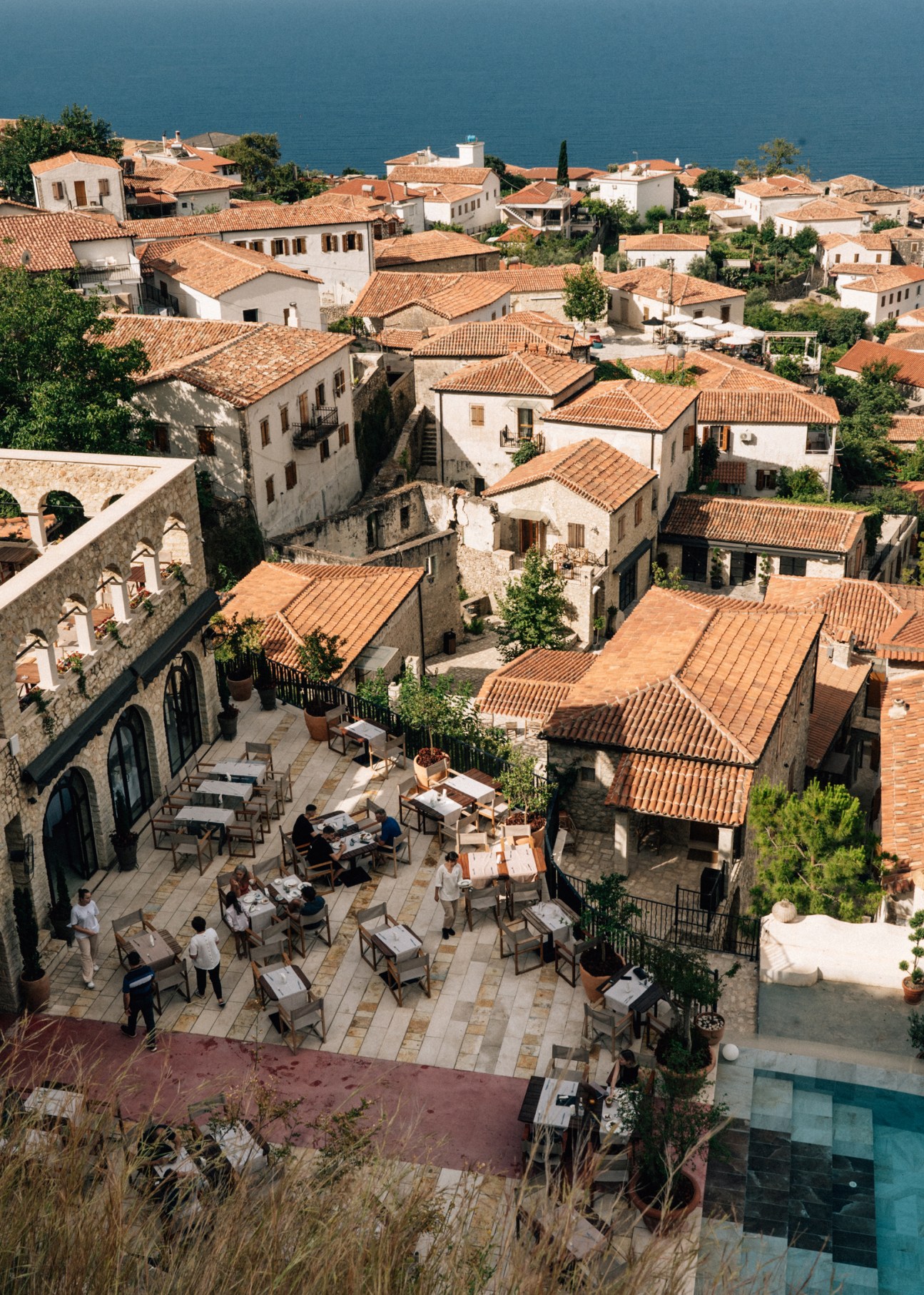
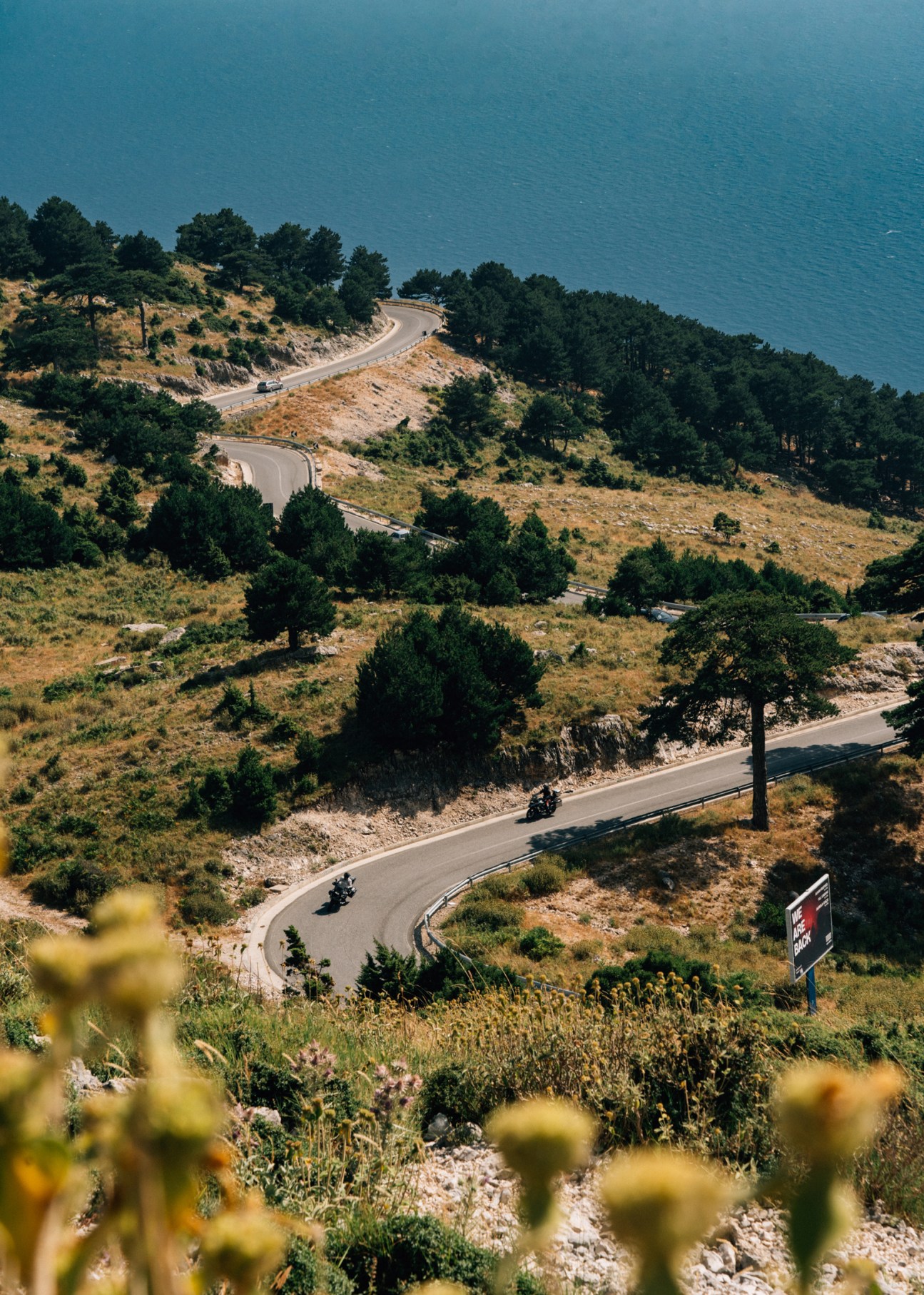
As we pick up our rental car, our friendly lessor tells Marco Argüello (Monocle’s Athens-based photographer) that he can pay in full at the end of our visit. “And if you don’t, the police will find you very easily,” he adds with a smile as he waves us off.
The south of the riviera, especially the town of Ksamil, has absorbed much of the surge in tourism in recent years. It’s easy to see why. The craggy, arid landscape harbours beaches rendered in oversaturated tones. Jetsetters abound; British-Albanian singer Dua Lipa has often stayed in a villa within the luxurious Kep Merli resort. As we wind our way down the coast, painted wooden signs advertise beach clubs with names like Bora Bora, Puerto Rico, Blue Diamond, Paradise and, more mystifyingly, Greg.
By the water, the white drapery of cabanas-for-hire billow and straw umbrellas shade loungers, the pulsating sounds of Europop anthems dominating the airwaves. Fruit sellers rove the pristine beaches with trays of cherries, grapes, figs and fried dough. “I’ve come here to escape the crowds in Italy but still experience something you might find in Puglia or even Greece,” says Giuseppe, an Italian holidaymaker sporting Speedos, a Panama hat and an iridescent sheen of sunscreen. Going by snippets overheard, it seems that most people hail from Giuseppe’s home country. However, there is a fair degree of English, Dutch, German, French, Danish, Russian and Portuguese representation too. On Pulëbardha bay, we meet a British couple in their sixties who say that they have been pleasantly surprised by the beauty of the Albanian coast. Overall, the mood is upbeat. Tanning sessions are interrupted for leisurely lunches of grilled fish, mussels and bottles of Korça, the local beer with labels featuring buxom Balkan women.
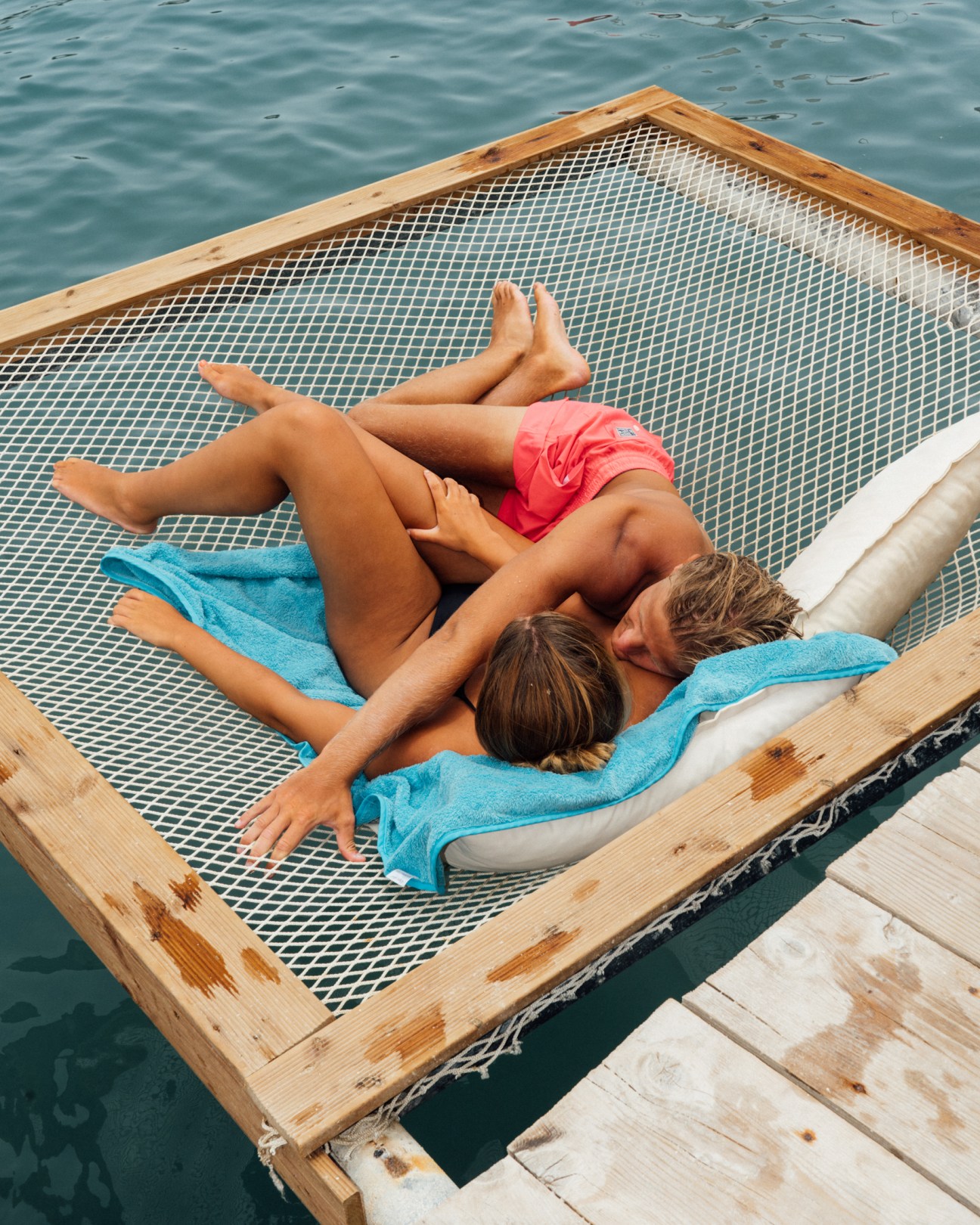

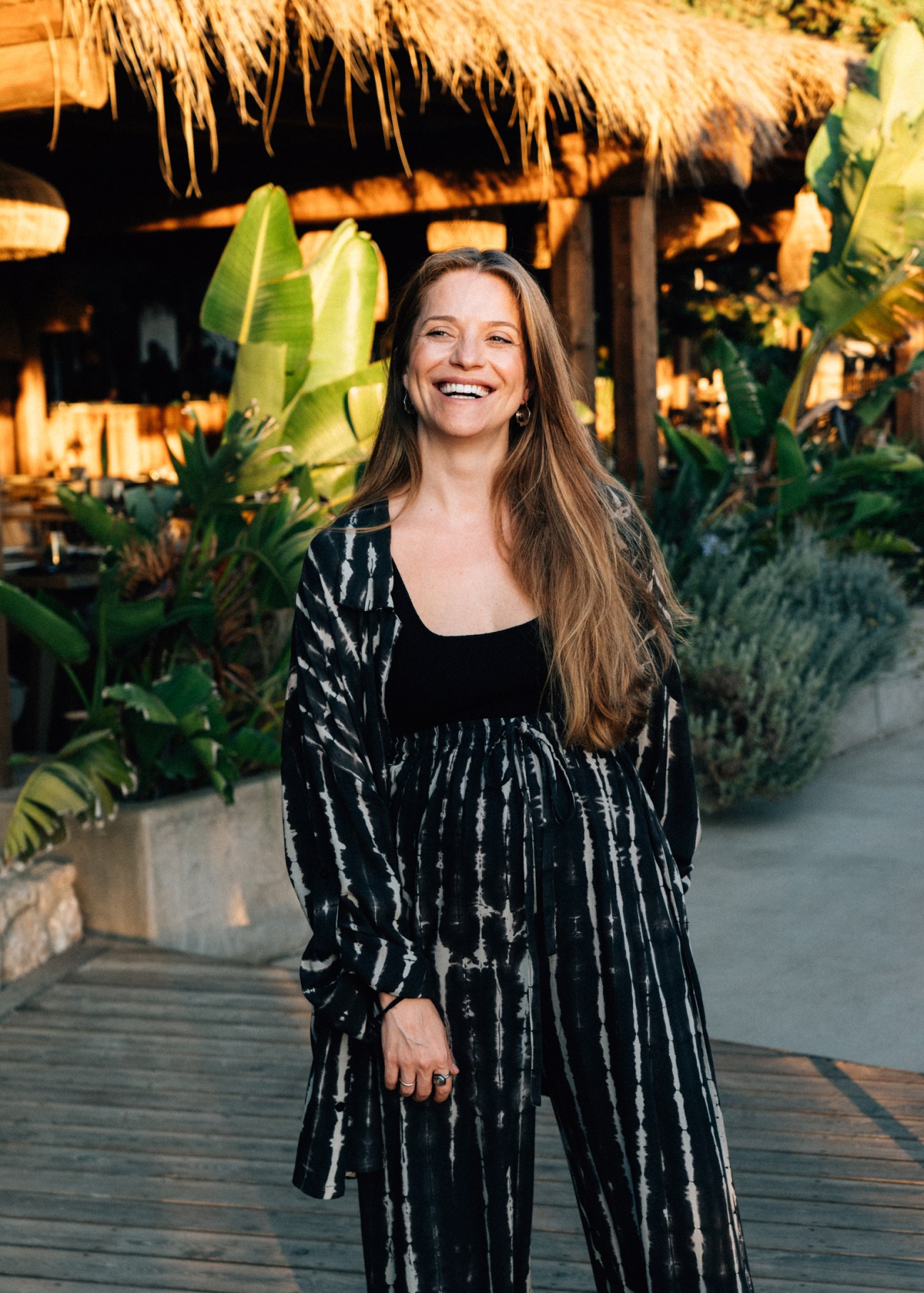
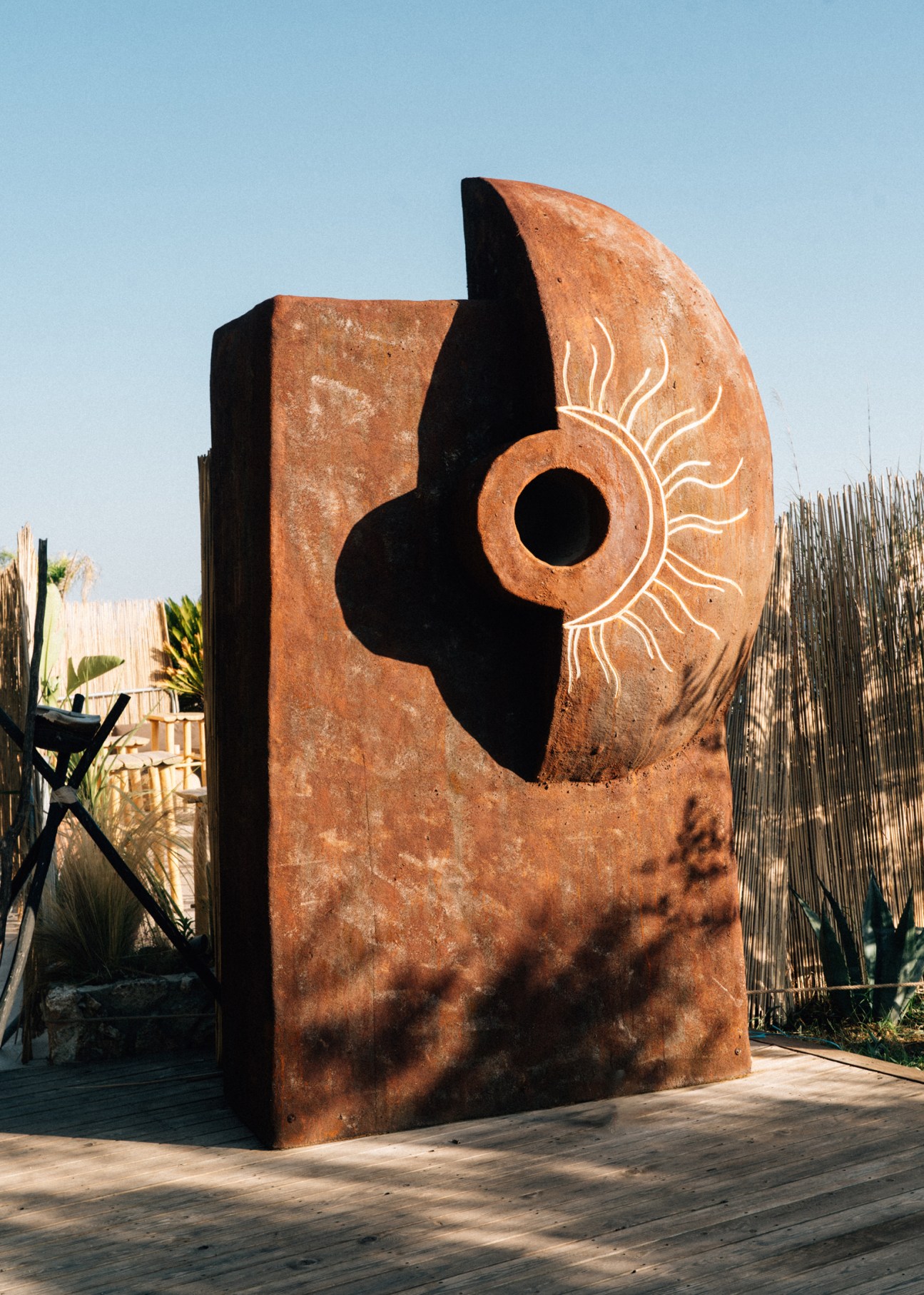
Construction has noticeably surged to meet the infrastructure demands of the Albanian Riviera’s newfound popularity. “Albania is developing a lot,” says Elena Bardhi, co-owner of the Moyo beach club on Drymades beach. “There is new investment coming in and it’s changing year-to-year.” Once a haven for hippies who would spend summers camping there, Drymades now exemplifies the wave of beach clubs and resorts crashing down on these once-virginal seafronts. But Bardhi cites the welcome arrival of the new Llogara tunnel, a government-funded project that opened in July 2024. The former 30-minute journey over the Ceraunian mountain range, travelling from Dukat to Palasë, has been shaved to seven minutes. Albania’s prime minister, Edi Rama, is also pushing for a new airport in Vlorë to improve access to the south. “We need to cherish and protect the land but we’re also trying to put Albania on the map,” says Bardhi. “In five years, everything will be closer to being finished.”
Since founding Moyo in 2022 with her husband Julian Zguro – the chef behind popular Tirana restaurant Tribe – Bardhi has overseen the beach club, which includes two restaurants, a yoga studio, a spa and a shop that stocks clothes and jewellery made by local artisans. She also organises events throughout the summer every year to attract lively crowds. But while Bardhi is eager to expand Moyo’s reach by hosting international DJs, she is conscious of safekeeping Albanian culture too; line-ups are spliced with local iso-polyphony singing (the Unesco-protected style of folk music). “We implement an Albanian vibe because we’re here, on this beautiful sea with the mountains directly behind us,” she says. “It’s magical.”
It’s true. For those not in a rush, taking the scenic route through the mountains is a rewarding experience. Olive groves mingle with sprays of lavender, sage and bougainvillea. The occasional mushroom-shaped concrete bunker is a reminder of Albania’s Stalinist leader Enver Hoxha’s rule from 1944 to 1985: paranoid about an invasion, he commissioned the construction of more than 750,000 of these bunkers that, ultimately, were never used. Today, herds of brown horses and their foals graze past them. Roadside vendors sell dried sage and rose petals, fresh plums, fig jam, honey and olive oil in repurposed plastic bottles and jars – often displayed on chintzy floral blankets. In the mountains, the sound of cicadas is constant when it’s not being drowned out by the intoxicating riffs of Balkan pop coming from the car radio.
The south of the country still struggles with the rural exodus that took place in the wake of Hoxha’s rule. (The Albanian diaspora is estimated to be about 1.2 million people; the national population is currently 2.4 million.) But the emergence of the coastline as a tourism destination has seen many people of Albanian descent return to the country for a holiday or to find work during the summer season. For example, Moyo’s friendly Albanian shopkeeper Jehona Shabani is usually based in Stockholm. And we meet Noel Çani in Qeparo at his family’s seven-bedroom hotel, Kshira Oasis; he now lives in Rome but returns to Albania every summer to help his parents run the business. “My friends in Italy all say that they want to come to Albania now,” says Çani. “When I was growing up, everyone here wanted to leave because of the economy,” he adds with a perfectly executed Balkan shrug.
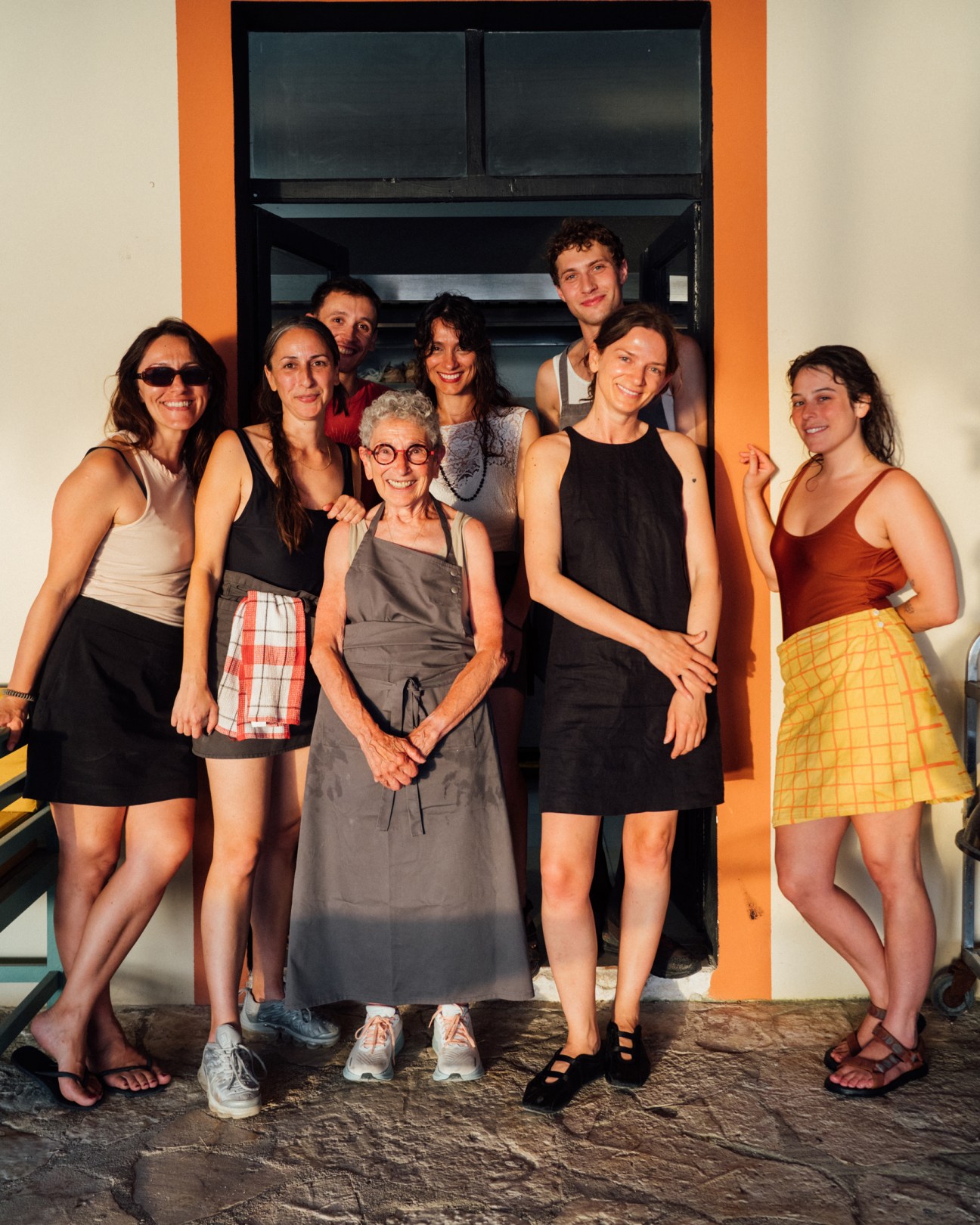
Even non-Albanians are setting up their own ventures on the riviera. In the laidback seaside town of Himarë, we meet for a final sundowner with Mexico City-based Leah Whitman-Salkin. With her partner, chef Raphael Wolf, and friend Ervjola Selenica, she opened restaurant and bar Plazhi i Saturnit as a summer project. Prior to Mexico, Whitman-Salkin lived and worked for six years as a book editor in Tirana. There, she opened a bookshop, started a feminist reading group and curated the Albanian pavilion at the 2016 Venice Architecture Biennale. “Going to the coast in the summer was a very important part of my life in Albania,” she says over a glass of orange wine. “Being here holds a lot of meaning. We all had this fantasy of bringing people together at a beach bar. We’re a hotchpotch crew but it’s been amazing. We’ve had friends come from Tirana and Pristina but also Mexico.”
Wolf is busy in the kitchen preparing today’s menu: fried potatoes with sage foraged that morning, caponata and pink shrimp crudo in plum water. This evening, his sous-chef is Whitman-Salkin’s mother, Frankie. “We work with three different local fishermen to source all of the seafood,” says Whitman-Salkin. “It’s fusion food in the sense that we’re all designing the menu together and we come from different backgrounds. Raphael trained in New York but has also worked in Tokyo and Mexico City.”
As we dig in, the sky glows orange and beachgoers begin to pack up their lilos and parasols. It’s true what they say: you should visit Albania. But it’s not Italy, Greece nor anywhere in the Caribbean Sea – and that’s a good thing. It has a charm of its own.
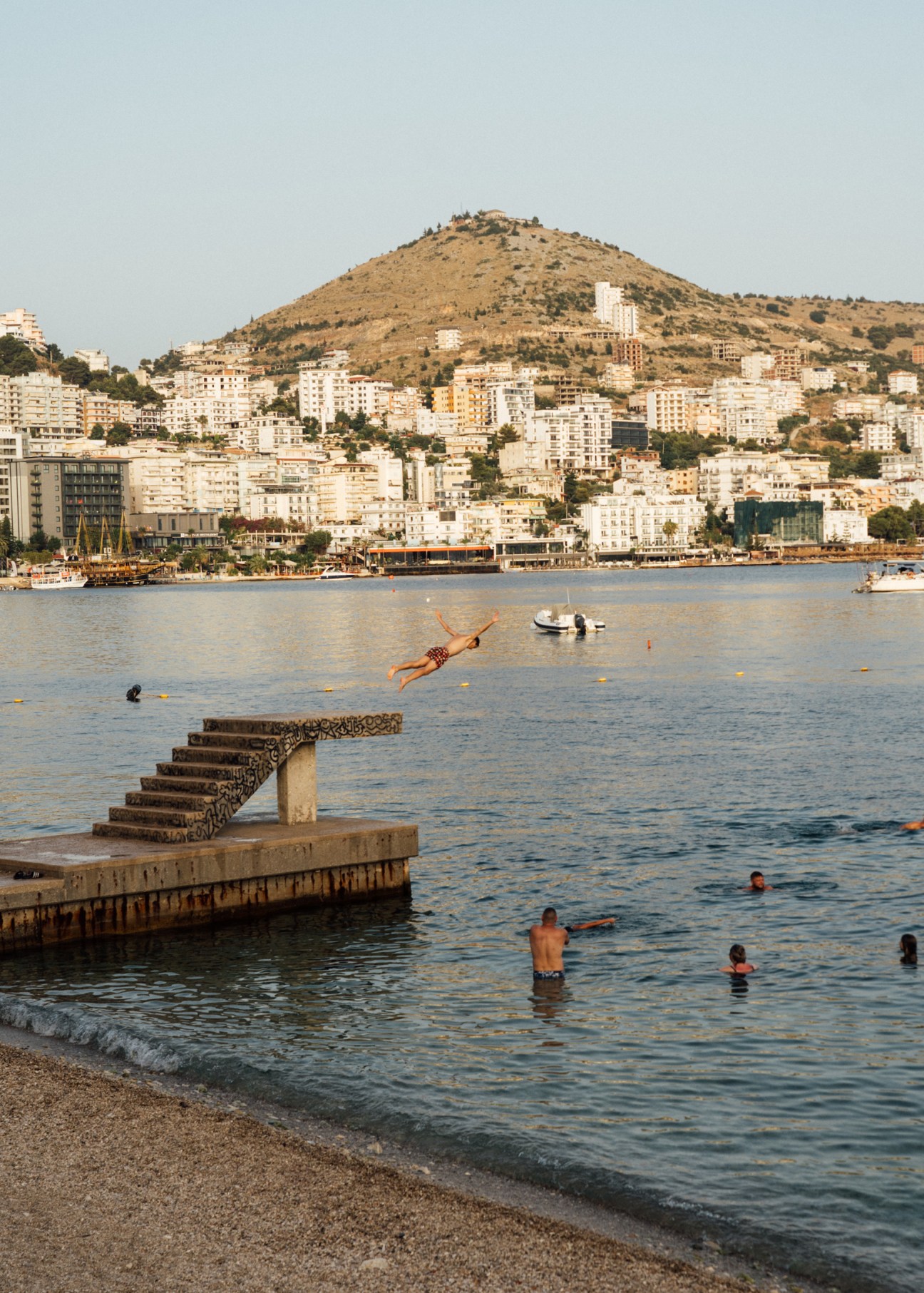
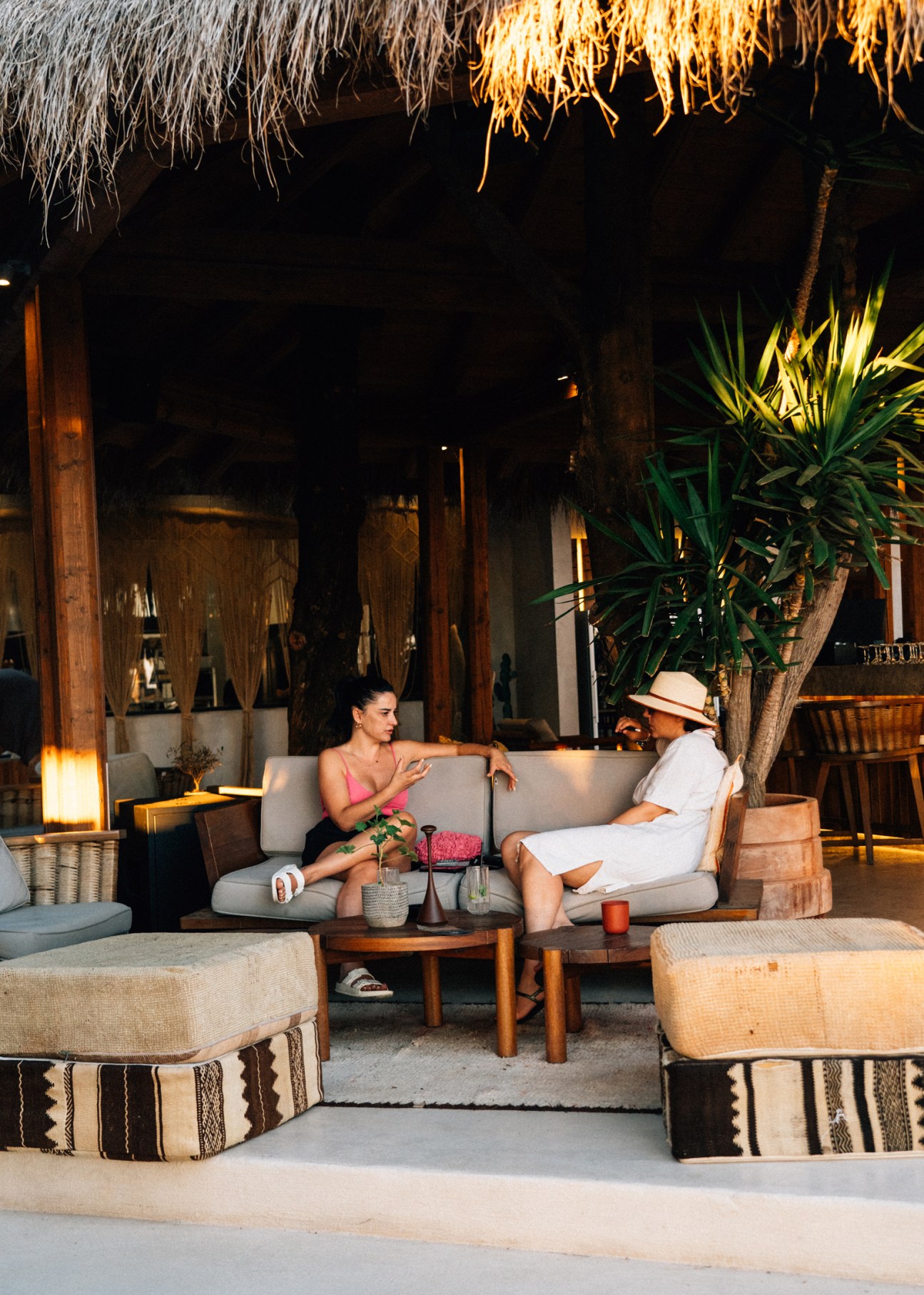
The Albanian Riviera address book
Stay: Zoe Hora
Perched in the hills overlooking the village of Dhërmi, Zoe Hora is an upmarket hotel that offers rooms and villas within its stone-walled premises. Stay here to enjoy breakfast by the pool and an evening aperitivo, while taking in a view of the sea from a roof terrace.
zoehora.com
Eat: Taverna Stolis
The Albanian Riviera’s proximity to Greece can be felt in the abundance of tavernas offering fresh fish, grilled vegetables and baked dishes such as moussaka. Our favourite is Taverna Stolis in Himarë, set within the peaceful confines of an olive grove. Make sure to round off the meal with a shot of the homemade raki, brewed in a bottle that also contains a wooden cross.
+355 69 283 3993

Drink: Moyo Beach Club
Located on the far southern end of Drymades beach, Moyo Beach Club attracts a well-heeled crowd. After a day spent catching waves in the Ionian Sea, we recommend settling in here for the evening with a margarita and small plates of lobster ceviche, tuna tartare and bruschetta.
moyo.al
See: Zvërnec Monastery
Located north of the pine-tree forests of Vlorë, on an island in the Narta Lagoon, you will find this 14th-century Byzantine monastery. Inside, the paintings and intricate woodwork are well-preserved examples of Balkan art history. If you’re lucky, you might even see some flamingoes in the lagoon.
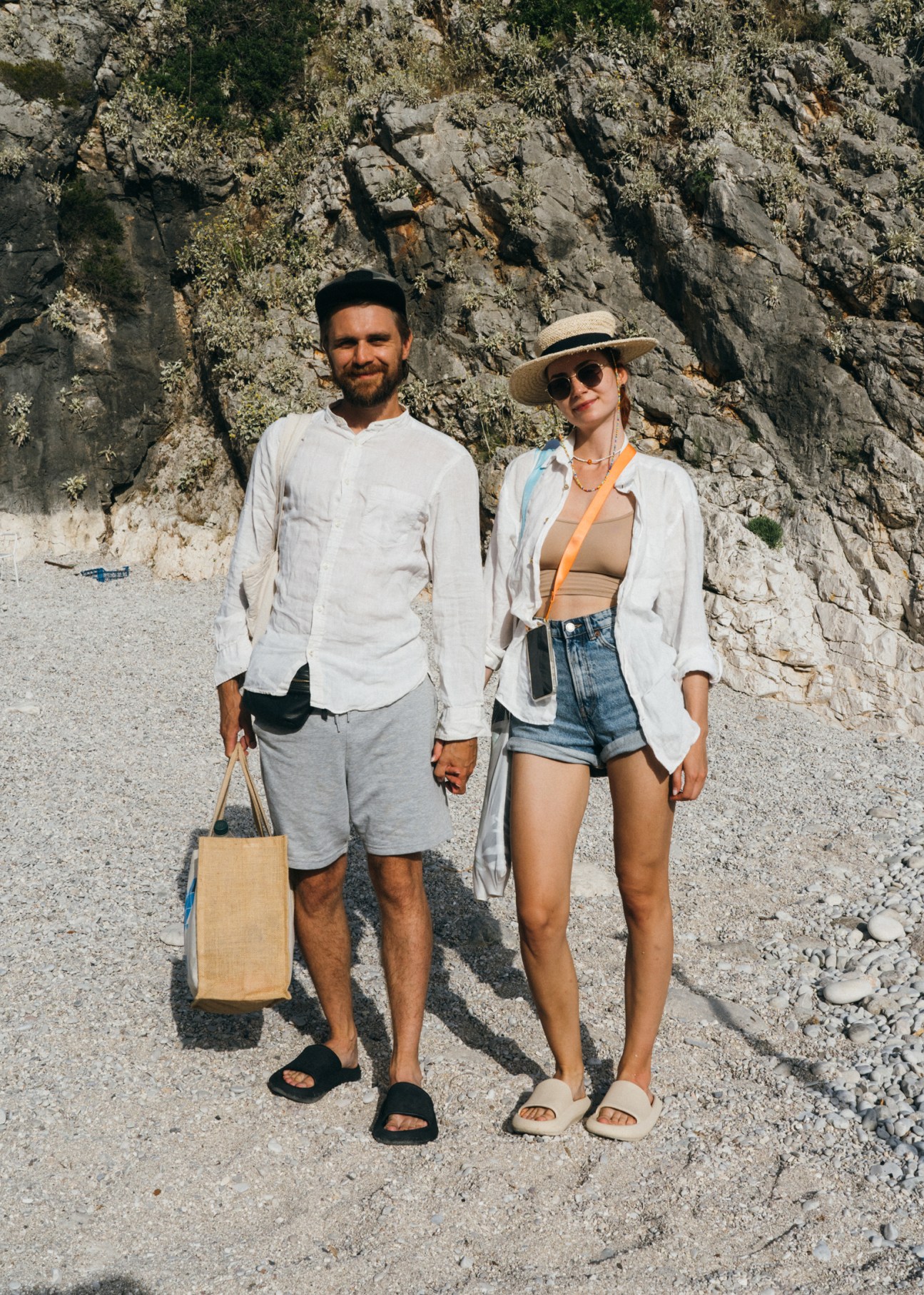
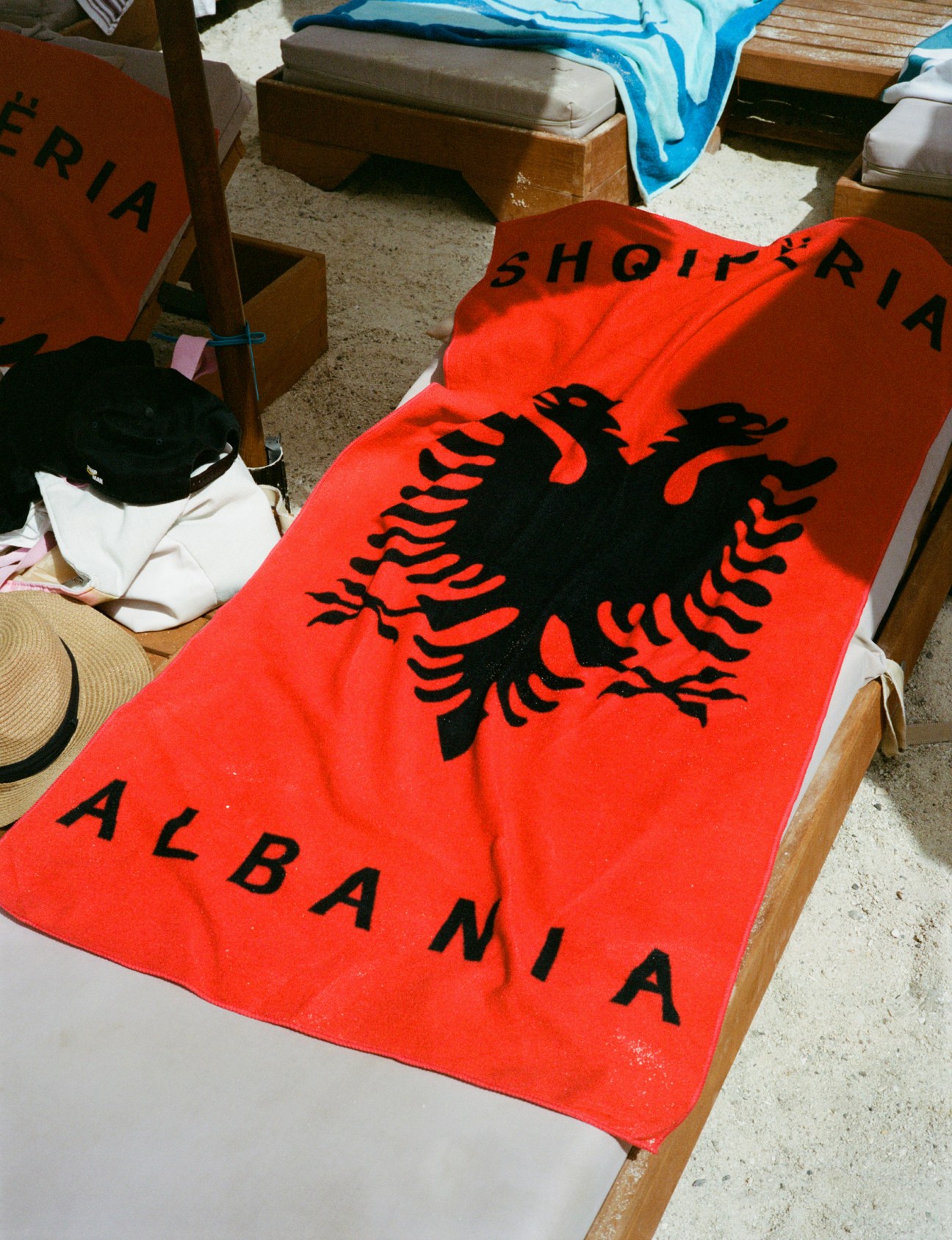
Shop: Abaia Winery & Vineyard
Albania’s wine scene is on the rise, with wineries improving the local stock. Make a pit stop at the Abaia Winery & Vineyard near Durrës to pick up some bottles of Shesh i Bardhë white and some local virgin olive oil to take home.
abaiawinery.al
Swim: Gjipe beach
A brisk 20-minute hike down a red-dirt trail takes you this beach. Located in a secluded bay surrounded by lush greenery, it’s a hidden gem that is well worth the effort to get there.


